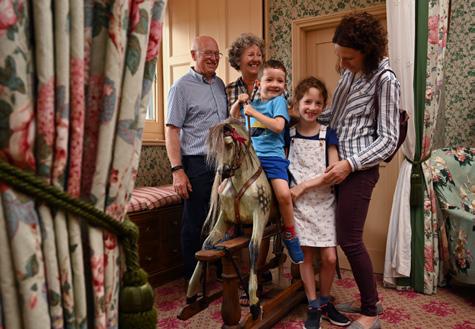
A grand day out Discover the delights of Audley End House
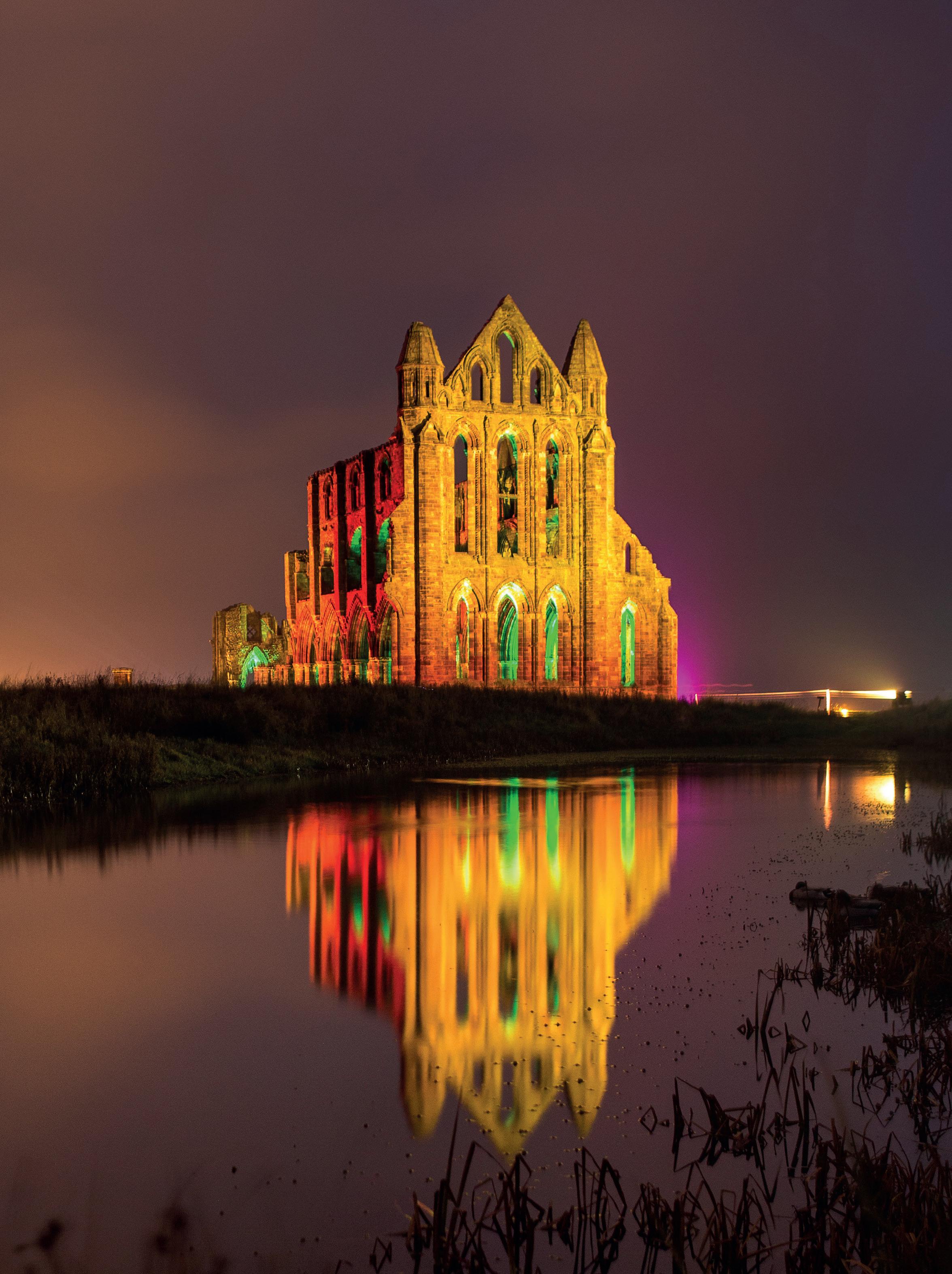
Unmissable events and enchanted evenings to enjoy as the winter nights draw in


A grand day out Discover the delights of Audley End House

Unmissable events and enchanted evenings to enjoy as the winter nights draw in

Get in touch
W www.english-heritage.org.uk/members
E membersmagazine@immediate.co.uk (for magazine queries only) or members@english-heritage.org.uk (for membership queries)
T 0370 333 1181 PO Box 569, Swindon, SN2 2YP
For English Heritage Luke Whitcomb, Johanna Lovesey, Jeremy Ashbee, Tom Dennis, Tersia Boorer, Tony Dike, Katie Kennedy, Richard Leatherdale
For Immediate Media Co.
Group editor Matt Havercroft
Group production editor Oliver Hurley
Senior art editor Sam Freeman
Art editor Elaine Knight-Roberts
Account director Esther Procee
Account manager Joanne Robinson
Director Julie Williams
Editorial director Dan Linstead
Design director Will Slater
Consultant editor Dave Musgrove
Advertising manager Jamie Bolton
Advertising enquiries 0117 300 8518; jamie.bolton@immediate.co.uk
Contributors
Norman Miller, David Atkinson, Richard Mason, Jo Caird, Michael Carter, Paul Bloomfeld, Roy Porter, Andrew Roberts, Josephine Oxley, Howard Spencer, Helen Dorritt
English Heritage Members’ Magazine is published on behalf of English Heritage by Immediate Media Co, Tower House, Fairfax Street, Bristol, BS1 3BN, UK T +44 (0)117 927 9009 W www.immediate.co.uk
Advertising income
Thank you to our advertisers and partners. The income we raise from adverts and inserts helps to cover the costs of producing your magazine.
Support us
English Heritage is a charity. Without the support of our Members and donors, our work would not be possible. To fnd out more about how you can help by making a donation or leaving a gift in your will, please visit www.english-heritage.org.uk/support-us or call the fundraising team on 020 7973 3797.
English Heritage cares for more than 400 historic monuments, buildings and places – from world-famous prehistoric sites to grand medieval castles, and from Roman forts on the edges of the empire to Cold War bunkers. Through these we bring the Story of England to life for more than 10 million visitors each year.

January to December 2018: 424,388
Registered charity no. 1140351 (England)
Registered company no. 07447221 (England)
Product code: 200555

As custodians of England’s largest collection of wall paintings, dating from the Roman era to the 20th century, we have launched an appeal to conserve these rare and often fragmentary works of art. Those few places where they have survived, such as Chester Castle (see above), provide little glimpses into people’s everyday lives that have been lost over time. What we are left with today is only a fragment of the vibrancy and quality that were once present and we now need to be very careful to protect those remains. Turn to page 34 to see how you can help us to stop them vanishing altogether. If you’re looking for inspiration for experiences to enjoy as the nights draw in, turn to page 22, where you’ll fnd details of our after-dark events. These include Enchanted, a series of magical illuminated walks around the grounds of selected sites in the run up to Christmas. If you are planning a day out over winter, please don’t forget to check opening times. Have a wonderful festive break and thank you for your support.
Kate Mavor Chief Executive

Richard Mason Collections and interiors curator
On page 28, Richard reveals the story behind the noncombatant uniform that has gone on display at Richmond Castle in North Yorkshire

Michael Carter Senior properties historian
On page 38, Michael shares the 12 ghost stories witten by a 15thcentury monk at Byland Abbey in North Yorkshire – and what they tell us about medieval beliefs

Howard Spencer Senior historian
On page 58, Howard reveals the story behind our new blue plaque to commemorate reggae star Bob Marley’s time living in London, where he wrote some of his most famous songs











It’s your last chance to get the hottest tickets in history as over 600 warriors prepare to clash on 12 and 13 October in our famous Battle of Hastings re-enactment. Speak to Norman and Saxon soldiers in their encampments, meet falconers and admire majestic birds of prey, try your hand at archery and watch superb cavalry displays. Plus, your tiny warriors can join in with a mini battle. Book online before 4 October and you’ll receive a 10 per cent discount. www.english-heritage.org.uk/battle

Keep up to date with the latest news, sites and developments

Kenwood hosts a new exhibition to mark the 350th anniversary of Rembrandt’s death
K enwood in Hampstead, London, is hosting a fascinating new temporary display from 4 October to mark the 350th anniversary of Rembrandt’s death. His Self-Portrait With Two Circles will be hung in the Dining Room Lobby alongside a new digital photomosaic of the painting, which will be created using visitors’ own selfes.
The curators wanted to show that Rembrandt could be said to be the pioneer of the modern-day selfe – he created around 80 self-portraits in a variety of media, which make up about 10 per cent of his total output.
Self-Portrait With Two Circles is among the many world-class paintings held at Kenwood that were formerly in the collection of Edward Cecil Guinness,
1st Earl of Iveagh. Known as the Iveagh Bequest, the collection also includes work by Johannes Vermeer, Frans Hals, Joshua Reynolds, Thomas Gainsborough and JMW Turner, and was given to the nation along with the house and grounds in 1927. This new display is generously supported by the Friends of Kenwood. Art lighting partner: TM Lighting. www.english-heritage.org.uk/kenwood
YOUR SAY
What’s your favourite site to visit over the winter?

I always enjoy going to Dover Castle in Kent. There’s so much to see and do, whatever the weather.
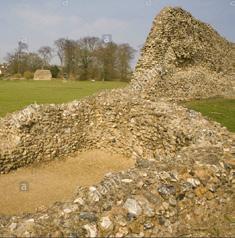
I love to visit Berkhamsted Castle and imagine what it would have been like in 1066 when William took the surrender of the English nobles.
Adrian Barham, Hertfordshire

850
The number of years since Lanercost Priory was founded. This Augustinian monastery in Cumbria is one of the bestpreserved in the country. www.english-heritage.org.uk/ lanercostpriory
senior landscape
A local friends group has played a central role in a recent conservation project at Dymchurch Martello Tower in Kent. The structure is is one of a chain of Martello towers – small circular forts that were built along the south and east coasts between 1805 and 1812, when England was faced with the threat of invasion by Napoleon.
The work took place over the summer and involved removing vegetation from the tower and addressing the issue of water getting into the historic fabric of the structure. Go to our website at www.english-heritage.org.uk/volunteer to fnd out more about how you can volunteer to help maintain and manage our free to enter sites. www.english-heritage.org.uk/dymchurch
338,226
The number of Allied troops that were rescued from Dunkirk in Operation Dynamo, run from Dover Castle from 26 May to 4 June 1940. www.english-heritage.org. uk/dovercastle
Why has the orchard been planted?
Previously known as the South Field, the orchard wasn’t accessible to visitors. The Arts and Crafts gardens are laid out in a series of connected ‘garden rooms’, which lead visitors on a journey through the site’s history. Thanks to support from a donor, the orchard has now become a new garden room, with an adjoining café becoming the focal point and therefore ftting seamlessly with this ethos. Has it been designed using historical sources? It references the former kitchen garden use of the site and is in a ‘quincunx’ layout inspired by the Arts and Crafts period. The pattern will allow trees to grow large enough for people to walk beneath.

It’s Apple Day on 21 October. What varieties have you got in the orchard?
We’ve got eight traditional varieties, such as Acklam Russet and Fillingham Pippin, along with cherry, damson, gage and plum. www.english-heritage.org.uk/mount-grace-priory
150
The number of years since the birth of Mahatma Gandhi. He has two blue plaques in London, one in Barons Court and one in Bromley-by-Bow. www.english-heritage.org.uk/ visit/blue-plaques
This year marks the 25th anniversary of the National Lottery, which since 1994 has distributed more than £40 billion to good causes across the UK. English Heritage has received signifcant support from the National Lottery Heritage Fund and Arts Council England, including £10 million for the new visitor centre at Stonehenge and a grant of over £4 million to the Marble Hill Revived project (see page 42 for more on this). We are grateful to the National Lottery Heritage Fund for its support. www.lotterygoodcauses.org.uk

































8 days from £1,099 PP









From the River Douro in Portugal to the Iron Gates of the Danube, sail along Europe’s arresting waterways and discover bulbfields, gorges, vineyards, monasteries, medieval towns, breathtaking Alsace and the Black Forest.









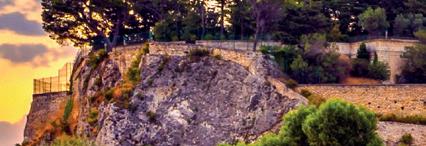





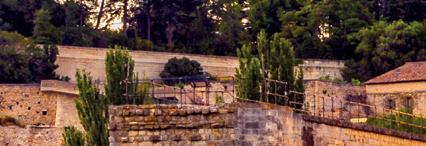


























We have enjoyed several holidays with Riviera Travel but this was our first river cruise and we really enjoyed

Mrs Owen




l




l


l

and concierge











and




















































Rob Woodside Estates director

Why sustainability is at the heart of what we do
It’s clearer than ever before that the climate crisis poses a profound threat to our planet and, like any organisation, English Heritage has a duty to act, both for the sake of future generations and on behalf of the sites, artefacts, landscapes, gardens and habitats in our care. There are a number of ways we can do this and energy reduction is among the most important. We’re committed to reducing our absolute energy use by 15 per cent by 2029/30. We’ll do this by increasing our use of renewables, replacing old and ineffcient infrastructure and by fnding ways to use energy more effciently, including making the switch to LED lighting. Reliance on single-use plastics is another issue we’re addressing. Earlier this year we replaced the plastic wrapping on the Members’ Magazine with a compostable alternative but that’s just the start. Our catering outlets have committed to eliminating the use of single-use plastics by the end of the next fnancial year, and you may have already noticed some changes in our cafés – for instance, we’re phasing out plastic bottles and replacing them with glass alternatives. Climate change means we also need to be more joined up with other organisations so, for example, at Dover Castle we’re working with the Kent Wildlife Trust to graze the moat with sheep. There’s plenty for us to be getting on with and we have lots of plans for the future. Keep an eye out for updates in future editions of the magazine.

Enjoy a closer look at the relationship between Stonehenge and the skies above the monument this October half-term with moon-themed family fun. Marking the 50th anniversary of the frst moon landing in 1969, there will be a number of events exploring humankind’s fascination with the moon from Neolithic times to today. Events will run daily from Saturday 26 October to Sunday 3 November, with full details and booking information available on our website. Can’t make it to Stonehenge this half-term? You can still soak up the


Latest news from our blue plaques scheme BLUE
atmosphere thanks to Skyscape, a new feed of the sky above the stones. Skygazers from all over the world can experience sunrise over this ancient monument, and see the journey of the moon and stars from within the stone circle any time of the day or night by visiting www.stonehenge skyscape.co.uk. Designed to present the ever-changing view of the sky above the stones, the website takes us a step closer to the people of Stonehenge and reveals how its builders may have understood their place in the cosmos. www.english-heritage.org.uk/ stonehenge
Don’t miss our exclusive podcast
Have you heard our podcast? Every Thursday, we bring you exclusive interviews about our properties. To listen, go to www.english-heritage.org.uk/podcast. And from 7 October, look out for a new podcast series, Speaking With Shadows, presented by Josie Long.
NEWS IN BRIEF

Trophy returns to Brodsworth Hall
The Thellusson Cup, a quirky trophy for chicken-keeping dating from 1901, is back at Brodsworth Hall after it was found being used as a vase in Los Angeles. The trophy was originally presented by Charles Thellusson to ‘The Faverolles Club for Old Birds’.

Essential work at Chester Castle
A £278,000 programme of essential repairs is being completed at Chester Castle in Cheshire. The work focuses on the lead roof of the 12thcentury Agricola Tower and the slate roof of the guard house, where there is evidence of water ingress and damp.
This summer has been another busy one for new blue plaques. One of the frst female war correspondents, Martha Gellhorn, has been honoured at 72 Cadogan Square, Knightsbridge. Joining her is the novelist Angela Carter (pictured), whose plaque adorns 107 The Chase, Clapham. Sir Arthur Pearson founded the charity now called Blind Veterans UK in 1915, and is honoured at 21 Portland Place. Painter John Linnell and portrait photographer Camille Silvy are both commemorated by a plaque at 38 Porchester Terrace, Bayswater. Nearby, at 14 Lancaster Gate, the scientist Sir Edward Frankland is memorialised. The new plaque to Bob Marley is discussed on page 58. The new edition of The English Heritage Guide to London’s Blue Plaques will be available from early November.


Conservation work on the clock tower at Osborne on the Isle of Wight is due to be completed this winter. The project includes reinstating the weather vane, repairs and redecoration. ‘The tower was built in the 1850s and has done well to survive relatively complete up to this point, but we have started to see defects appear,’ says Timothy Fagg, territory project manager. ‘The works will prevent the loss of historic fabric and ensure the property is maintained for future generations to enjoy.’ www.english-heritage.org.uk/osborne
Don’t miss these three intriguing objects now on display at our historic properties
2

View From the Cascade Terrace, Chiswick, 1742
This painting by Lambert and Hogarth will return to Chiswick House in late October after conservation and an exhibition in Italy.

Anglo-Saxon stone cross, c.700
A focal point of the new Whitby Abbey museum following conservation work, this is one of the frst freestanding Anglo-Saxon crosses in England.
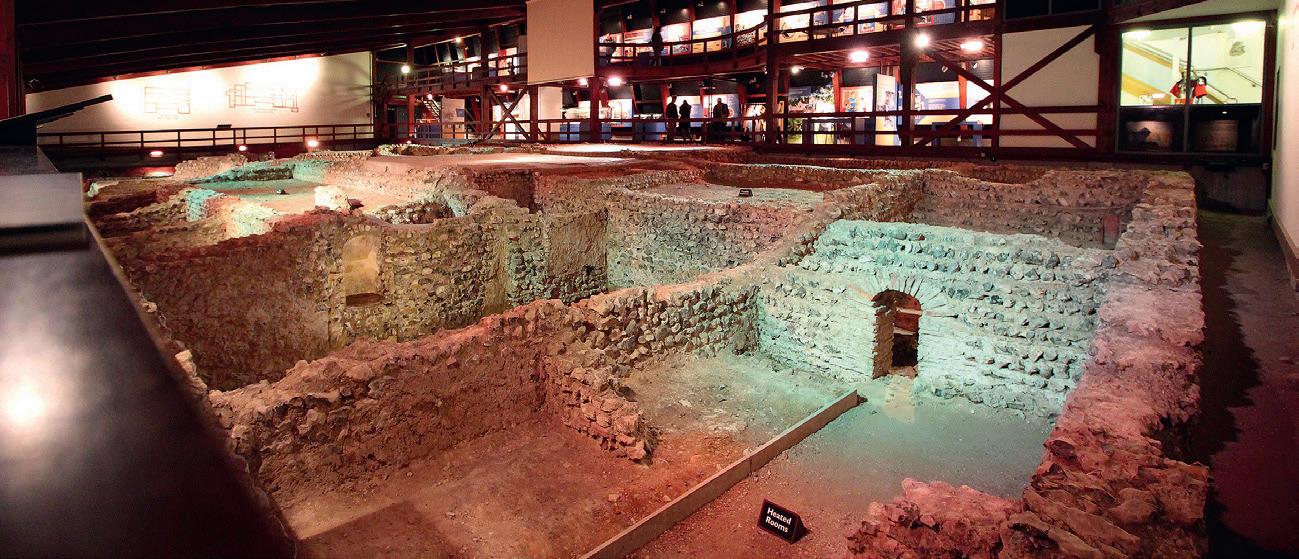
What’s taken place at Lullingstone?
Seven of the original volunteers who helped discover Lullingstone Roman Villa recently reunited to celebrate the 70th anniversary of the excavations. There was a Roman villa hiding under everyone’s feet in Lullingstone? Yes, exactly. Kent’s Darent Valley has among the country’s highest concentrations of Romano-British villas, so it was thought there must be something in Lullingstone. Work
started in 1949 by volunteers from the Darent Valley Archaeological Research Group, continuing until 1961.
That’s a big dig.
There was a lot to fnd! Hugely important artefacts were uncovered, including a house-church, a heated bath suite and rare wall paintings. These were so signifcant that the Ministry of Works, English Heritage’s predecessor, took over the dig in 1956. www.english-heritage.org.uk/lullingstone
3

Orpheus Enchanting the Animals, 1560s
After an 18-month conservation project, this painting is back at Apsley House. The attribution has been upgraded from Alessandro Varotari to Titian’s workshop.
EXPLAINED
Who is Arvo Pärt and what is he doing at Belsay Hall?
Pay a visit to Belsay Hall, Castle and Gardens in Northumberland up until 12 January and you’ll be able to experience Memory & Light, a sound and light installation by the world-renowned Estonian composer Arvo Pärt. The project was inspired by Pärt’s words from his musical diaries: ‘I could compare my music to white light, which contains all colours. Only a prism can divide the colours and make them appear; this prism could be the spirit of the listener.’ Memory & Light is curated by Clare Farrow and designed by Arup. It was commissioned by London Design Festival in 2018 for the V&A and it has now been reimagined for Belsay Hall. www.english-heritage.org.uk/belsay







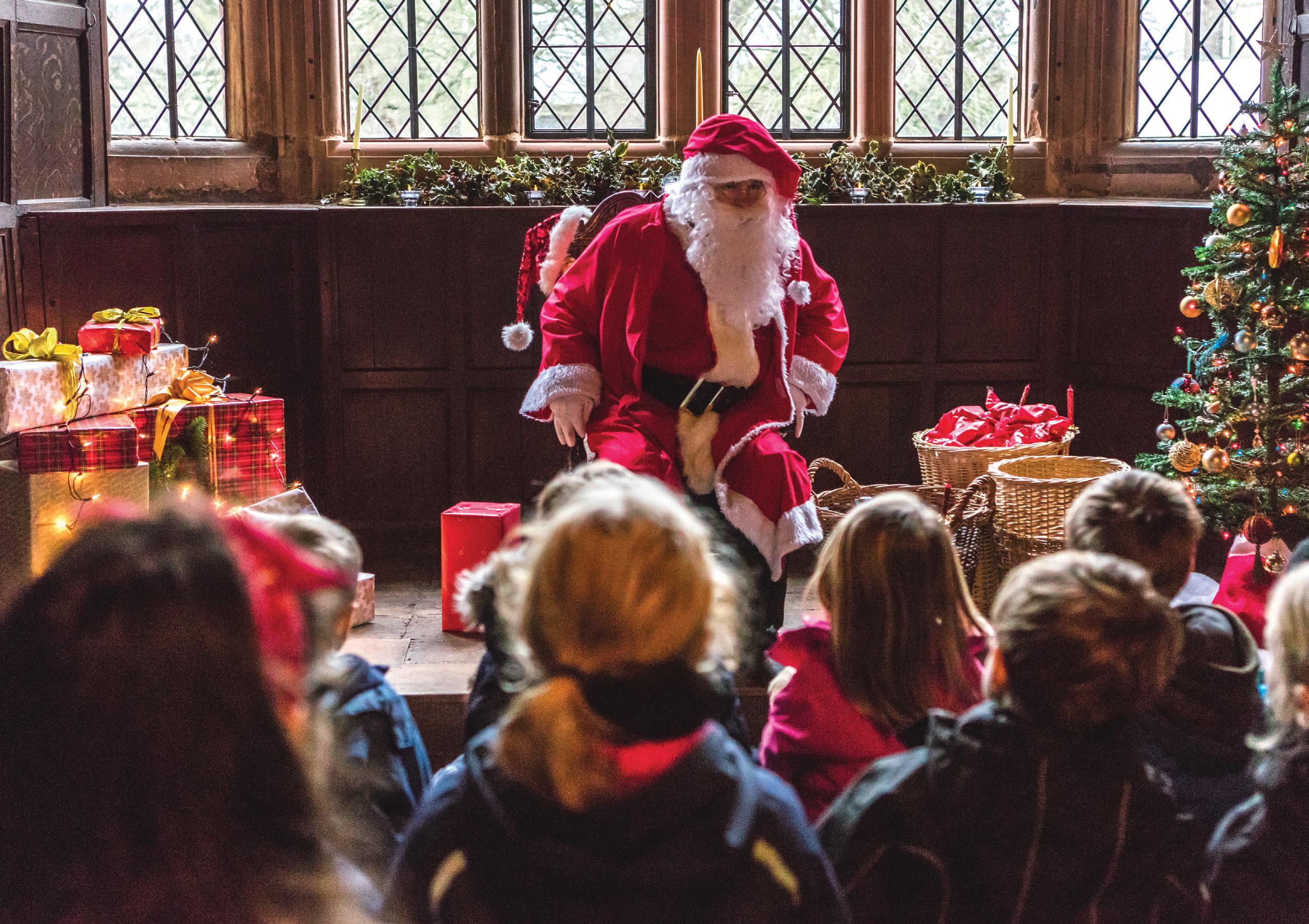












For Christmas Day
The Stonehenge souvenir Christmas bauble is crafted in bone china and comes gift boxed, £10; Crimson Tweed Christmas Stocking with a soft velvet edge, £30

Make this Christmas one to remember with a range of classic gifts from our online shop.
To discover our full range visit www.english-heritageshop.org.uk
tea and toasts
The English Tea Shop Premium Collection contains a selection of 72 organic tea bags, £12; Stonehenge Woolly Jumpers Mug, £16; Heraldic Goblet , £18.50
For someone special Stonehenge sarsen and bluestone cross heart pendant with a sterling silver cross and chain, £265
www.english-heritage.org.uk
For little adventurers
It’s dressing-up time! Royal Princess Dress with head-dress and veil, from £25; St George wooden shield and sword, £12

These Mr Men and Little Miss water bottles are a fun way for kids to quench their thirst, £10 each For home lovers This Golden Lily Hand Wash is from Morris & Co, and comes in beautiful William Morris-inspired packaging, £14; Recycled Wool Throw, £16 For food lovers
the most of Christmas with these seasonal treats. English Heritage Chilli Mead, £10.50; Ginger Liqueur, £12; Boxing Day Chutney, £3.50
INTERVIEW MATT HAVERCROFT PHOTOGRAPHS GARETH IWAN JONES & JIM HOLDEN
Tintagel Castle receives hundreds of thousands of visitors each year but its isolated location on a promontory of the north Cornwall coast also made it a challenging place for many visitors to access. The new bridge enables step-free access to the castle, but what is perhaps most exciting is that it reconnects a divided landscape, enabling visitors to enter the castle via the original route.
Once the decision had been made to build a new bridge, we knew the success of the project would rest on the design. It was essential that the design of the bridge was of the highest quality to ensure the constraints and sensitivities of the site were taken into account. This quest for quality led us to hold an international design competition.
The competition saw 137 entries from all over the world but it was Ney & Partners working with William Matthews Associates who ultimately won the prize with their design for a traditional cantilever bridge – one of the oldest forms of bridge. Their design enables the bridge to sit beautifully in the landscape.
From announcing the winner of the design competition to opening the bridge to the public has taken three-and-a-half years. During this time, the design team has completed painstaking research to ensure the bridge was buildable. This included studies to ascertain the strength of the rock, wind-tunnel testing to ensure the structure could withstand Cornwall’s rugged weather, and material testing to inform the selection of metals appropriate for a coastal environment.
The bridge is constructed of two main materials. The structural cords are formed of painted carbon steel, and the connecting blocks, bracing and balustrade are fabricated from duplex stainless steel. The bridge deck is built of 40,000 pieces of Cornish slate and the handrail is made of oak. The bridge is designed with a small gap at the centre, which allows for the thermal expansion of each half of the bridge.


Tintagel’s cliff-top location means that building anything is a challenge. There is only one narrow access road into the site. To construct the bridge, we had to find a way that would enable permanent access to the bridge site, without impacting the archaeology or ecology of the area. The answer was a cable crane – a form of cable car, used extensively in the Alps.
The project has taken almost fve years to complete from the initial concept to opening to the public on 11 August 2019. The new bridge will enable more people to access the site and will provide them with a better understanding of this important place. We also hope that the bridge will give visitors a real thrill as they step out across the void in the footsteps of Tintagel’s original inhabitants.
To plan your visit to Tintagel Castle and to book a time slot for your walk across the bridge, go to www.english-heritage.org.uk/tintagel

‘The project has taken almost five years to complete’

Coveted by kings and steeped in the stories of its former residents, Audley End House and Gardens in Essex continues to charm all who come to peel back its layers of history

Crossing the little stone bridge over the River Cam towards Audley End House and Gardens, I arrived to find this elegant Jacobean pile looking every inch the triumph of a 1760s makeover by historic design duo Robert Adam (architecture and interiors) and Lancelot ‘Capability’ Brown (landscapes). Even so, it was hard to comprehend that today’s grand mansion is a mere hint of the palatial residence that once stood on this sweep of Essex countryside.
Had I arrived in the 17th century, the Audley End I would have seen would have been an incredible three times the size of the current house, with great wings wrapped around vast courtyards. Once considered the most ambitious house in Jacobean England, intended to accommodate royal visitors on their progresses around the country, it was so impressive Charles II snapped it up as a royal palace.
Over the centuries, its owners have ranged from ill-fated aristrocrats – one executed in 1572 for treason against Elizabeth I, another convicted in 1618 of embezzlement – to the Polish special operations executive, who, according to my guide, curator Peter Moore, trained agents in fieldcraft, sabotage, radio communication and more during the Second World War.
This wartime link adds a dash of derring-do to a vista featuring woods, ponds, walled kitchen gardens and 18th-century structures such as the
Temple of Victory, described by head gardener Louise Ellis as ‘an eyecatcher on the horizon’. Elsewhere, handsome red-brick stables house friendly horses, while green-fingered visitors can swoon over the parterre created by 1830s garden designer William Gilpin.
Back in the house, the list of former residents includes a number of memorable characters ‘below stairs’ too, although, as Moore revealed, the household staf at Audley End actually lived upstairs in the attics and over the service wing. One of these, Avis Crocombe, who was cook to the Braybrooke family in the 1880s, has since re-emerged as a surprise YouTube sensation, with a historic interpreter rustling up a selection of the cook’s favourite dishes for the cameras.
‘We only know these were the dishes she served to the Braybrookes thanks to a wonderful piece of fortune’, explained Moore. ‘A visitor approached us to say he had a handwritten recipe book with the names of his ancestors – and one had been cook here.’ The resulting videos have gone viral, attracting views from as far afield as the US, the Philippines and India. On selected days, visitors can even find interpreters playing the cook and kitchen maids hard at work in the historic kitchens.
A tour of the 1880s service wing also provides the opportunity to learn more about the rigours of Victorian servant life and see how clothes were cleaned and food was prepared. In contrast, the nursery reveals how the Braybrooke children would have lived in their suite of rooms with their governess, nursemaids and tutors.
‘There are so many stories here I could spend the rest of my life and only scratch the surface,’ said Moore. To help out, Audley End now has a volunteer history research group delving into the lives of people who worked here up until its purchase by the state in 1948.

‘Its owners have ranged from illfated aristrocrats to the Polish special operations executive’
For fans of period architecture, highlights of a tour of Audley End’s rooms include Robert Adam-designed spaces such as the Great Drawing Room and the Little Drawing Room, with its ancient Etruscan motifs
beneath a painted ceiling, along with the soaring Great Hall, where Moore revealed that the ornate burnished Jacobean woodwork is not quite what it seems: ‘The 19th-century 3rd Lord Braybrooke was very much an antiquarian, so he ripped out some of the Adam interiors and put in faux Jacobean!’ This
includes two figures by the fireplace that are actually upcycled 19th-century stone painted to look like old wood, plus the ornate plaster ceiling in the library. The latter is also home to a beautiful Victorian piano that visitors of all ages are invited to play.
For art lovers, there are early English portraits plus Old Master works by the likes of Hans Holbein the Younger. Taking pride of place in the drawing room is a newly restored canvas that had originally been ascribed to the wrong artist. ‘For a long time it was thought to be by Canaletto, but we now think it’s by Bernardo Bellotto, showing the Doge’s Palace in Venice painted around 1740,’ explained Moore. ‘We have recently also borrowed or acquired 67 paintings from the Braybrooke private collection.’
Eclectic collections
Further evidence of Audley End’s layers of history is provided by its eclectic collections gathered by past inhabitants. ‘They reflect diferent strands of collecting at diferent periods,’ said Moore. ‘The 4th Lord Braybrooke collected ethnographic objects, so as you walk around you can see Native American clubs, Indian shields, all sorts of things from all over the world. It’s like a microcosm of objects from pretty much everywhere.’
Other surprises contained within cabinets are the myriad finds of various Braybrooke children over the



In April, an Easter trail challenges young visitors to search for facts about the house hidden around the grounds, and regular events provide entertainment for all ages. The kitchen garden also looks spectacular at this time of year, with apple and pear blossom.
In June, our Blooming Gardens event showcases the foral beauty of the parterre, while the Legendary Joust in July has knights competing in a medieval tournament. The WWII Weekend combines insights into the rigours of wartime life with 1940s music and dancing.
In September, Audley End hosts its new Taste of History food festival, exploring our culinary history through the ages, along with the Victorian Sports Horses event. October highlights include Get Hands on With History during the half-term holiday.
Misty light lends a particular magic to the river and gardens over the winter, while the house itself becomes a bright beacon of festive cheer. December must-sees include the Preparing for a Victorian Christmas event, along with the 16 dazzling nights of Enchanted Audley.
For details of all events and to check times and prices, go to www.english-heritage.org.uk/events
generations, including a mummified frog, while the upper and lower galleries are set aside to showcase one of Britain’s finest collections of taxidermy.
Whether you’re motivated by art and architecture or want to immerse yourself in stories of Victorian life at all levels, what emerges throughout the house and grounds is a certain playful joy, and it’s easy to see why Charles II wrote in 1666 of ‘having taken a liking to Audley End’. The king came partly for the thrill of horse races and a flutter at nearby Newmarket. But year round, Audley End remains a great bet for a grand day out.
EXPLORE OUR MAP OF THE THINGS NOT TO MISS AT AUDLEY www.english-heritage.org. uk/magazine
PLAN YOUR VISIT
To plan your visit to Audley End House and Gardens and to check opening times, go to our website at www.english-heritage.org.uk/audley




Discover this magnificent collection of 19 country house hotels and island resorts across the UK and Channel Islands.
Our Heritage Break ffer includes an overnight stay with a glass of Champagne and chocolates on arrival, a £35 allocation per person towards , and a full traditional breakfast the next morning.
Which of our hotels will spark your imagination? Simply visit our website and enter the promo code to redeem this offer*. handpickedhotels.co.uk

The clocks may soon be going back and the nights getting longer, but that doesn’t mean you have to hibernate. From our Enchanted events to our ghost tours, a host of exciting after-dark activities await

Where Kenilworth Castle, Warwickshire
When Fri 25–Sat 26 & Wed 30–Thu 31 Oct
Are you brave enough to explore the castle after dark? Join us for a truly terrifying treat this Halloween and wander the spine-chilling ruins of Kenilworth Castle. As the castle gates creak open you’ll soon discover you’re not alone. You will be transported to a world where gruesome goings-on are commonplace – encountering a host of creepy characters ready to give you the fright of your life. Kenilworth Castle has been named as one of our most haunted sites, have you got what it takes to experience our Fright Night? Prepare for a scare… it’s going to be a scream!
Where Whitby Abbey, North Yorkshire
When Fri 25–Sat 2 Nov
The Gothic ruins of the 13th-century abbey moved Bram Stoker to put pen to paper. The resulting 1897 novel, Dracula, is a classic of Gothic literature, so this event is a timely opportunity to mark the build up to Halloween. The abbey, sat dramatically on a cli f edge and soaring over the picture-postcard Yorkshire town, will be bathed in a series of spectacular rainbow illuminations to contrast with the black night sky. The spirit of the count still lurks among the shadows of the Yorkshire seaside.

Expect ghoulish tales in the spirit of All Hallows’ Eve with these walks in search of restless spirits
Spooky Woodland Walk
Wrest Park, Bedfordshire
Fri 25–Sat 26 Oct
Listen to stories on a 45-minute night walk along woodland paths. Suitable for young children.
Ghost Tours
Stokesay Castle, Shropshire
Fri 25–Sat 26 Oct
Our spine-chilling storytellers will bring alive the darker side of history.
Ghost Tours
Audley End House and Gardens, Essex
Fri 25–Sat 26 Oct
Recreate a 17th-century witch trail to uncover the sorcerer in your midst.
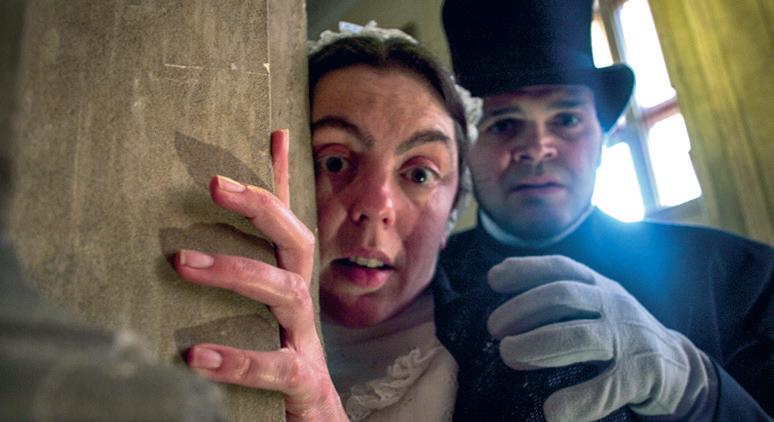
Ghost Tours
Scarborough Castle, North Yorkshire
Fri 25–Sun 27 Oct
A one-hour tour of the medieval ruins on the Yorkshire coast highlights its gruesome history. Suitable for ages 10 and above.
Ghost Tours
Bolsover Castle, Derbyshire
Sat 26 Oct–Thu 31 Oct
A moonlight stroll through the dark recesses of our spookiest site is not for faint-hearted souls.
Ghost Tours
Carlisle Castle, Cumbria
Mon 28 Oct–Fri 1 Nov
An after-hours torchlight tour of the most besieged castle in the country visits the dungeons and the licking stones. Suitable for ages 14 and above.
Ghost Tours
Deal Castle, Kent
Wed 30 Oct–Sat 2 Nov
Uncover the legends from the dark side of the Kent coast’s striking Tudor castle.

All our Enchanted events take place on Thu 5–Sun 8, Thu 12–Sun 15 & Thu 19–Sun 22 Dec, while Enchanted Audley End also takes place on Fri 27–Mon 30 Dec
This series of illuminated, outdoor trails make for the perfect winter trip. Visitors are invited to step through tunnels and pathways of twinkling lights into an enchanting world of colour, light and sound. There are magical secrets to discover along the way, such as dancing fairies and extraordinary talking trees, as well as interactive lighting installations to enjoy.
Each trail presents a familiar property in a new light. ‘All the Enchanted events are bespoke to the site, using soundscapes and interactive light installations to play with people’s expectations,’ says events manager Diana Evans. ‘We’re using each site di ferently to create a sense of timeless magic.’
WHERE TO FIND THEM
1. Belsay Hall, Castle and Gardens, Northumberland
2. Brodsworth Hall and Gardens, South Yorkshire
3. Witley Court and Gardens, Worcestershire
4. Audley End House and Gardens, Essex
5. Eltham Palace and Gardens, London
FOR 2019
6. Walmer Castle and Gardens, Kent



Where Rievaulx Abbey, North Yorkshire
When Sun 1 & Sun 8 Dec
Get in the festive spirit and meet Santa Claus at these daytime Christmas events
Belsay Hall, Castle and Gardens, Northumberland
Sat 30 Nov–Sun 1 Dec & Sat 7–Sun 8 Dec
Explore the Pillar Hall and Quarry Garden before meeting the big man himself. Gift included.
Bolsover Castle, Derbyshire
Sat 30 Nov–Sun 1 Dec, Sat 7–Sun 8, Sat 14–Sun 15 & Sat 21–Sun 22 Dec
Father Christmas takes a break from delivering presents elsewhere. Gift included.
Join the Bilsdale Silver Band for an atmospheric afternoon of festive favourites, set against the ruins of one of England’s most powerful Cistercian monasteries. Combine a chance to exercise your vocal cords with stretching your legs, by walking in the footsteps of medieval pilgrims from Helmsley Castle to Rievaulx. Carols in the nave of the abbey church make for an informal performance with audience participation encouraged.

Where Apsley House, London When Fri 6 Dec
Join the Royal Holloway University Chapel Choir for festive carols at the former home of the Duke of Wellington. The performance, hosted in the Waterloo Gallery, is set against the collection of artworks gifted to Britain’s greatest military hero.
Where Wrest Park, Bedfordshire
When Mon 9–Tue 10 Dec, 6pm & 8pm
Get into the festive spirit at Wrest Park with this evening of carols in the stunning surroundings of the library, with the Choir of Christ’s College, Cambridge singing a mix of traditional and modern carols.
Where Bolsover Castle, Derbyshire
When Thu 19 Dec
The Chesterfield Philharmonic Choir leads the festive chorus at Bolsover Castle, an event set in the stunning surroundings of the 17thcentury indoor Riding School. It was here that the riding master to the future King Charles II trained his horses.

Brodsworth Hall and Gardens, South Yorkshire
Sat 30 Nov–Sun 1 Dec, Sat 7–Sun 8 & Sat 14–Sun 15 Dec
Gather around the tree at this Victorian property with Father Christmas. Gift included.
Kenilworth Castle and Elizabethan Garden, Warwickshire
Sat 7–Sun 8 Dec
Father Christmas will make an appearance at this Christmas at the Castle event.
Kenwood, London
Sat 7–Sun 8, Sat 14–Sun 15 & Sat 21–Sun 22 Dec
A fying visit by Father Christmas to this historic property on the edge of Hampstead Heath. Gift included.
Wrest Park, Bedfordshire
Sat 7–Sun 8, Sat 14–Sun 15 & Sat 21–Sun 22 Dec
Join an audience with Father Christmas for tales of Christmas past. Gift included.

Where Apsley House, London
When Fri 22 Nov
Imagine yourself at the heart of Regency society, joining a lavish soirée at the best address on Hyde Park Corner. This Regency event will be hosted in the Waterloo Gallery, where the Duke of Wellington entertained his distinguished guests to celebrate his great victory at Waterloo in 1815. The Iron Duke may have been known for his stunning military skills in defeating Napoleon Bonaparte, but he and his generals could also cut a rug on the dancefloor. Dance master Stuart Marsden, a historical dance advisor and choreographer to TV programmes such as Poldark and Pride and Prejudice, will lead the proceedings to a soundtrack of period music. No previous period dance experience is required. Regency costumes encouraged; reception drink included.
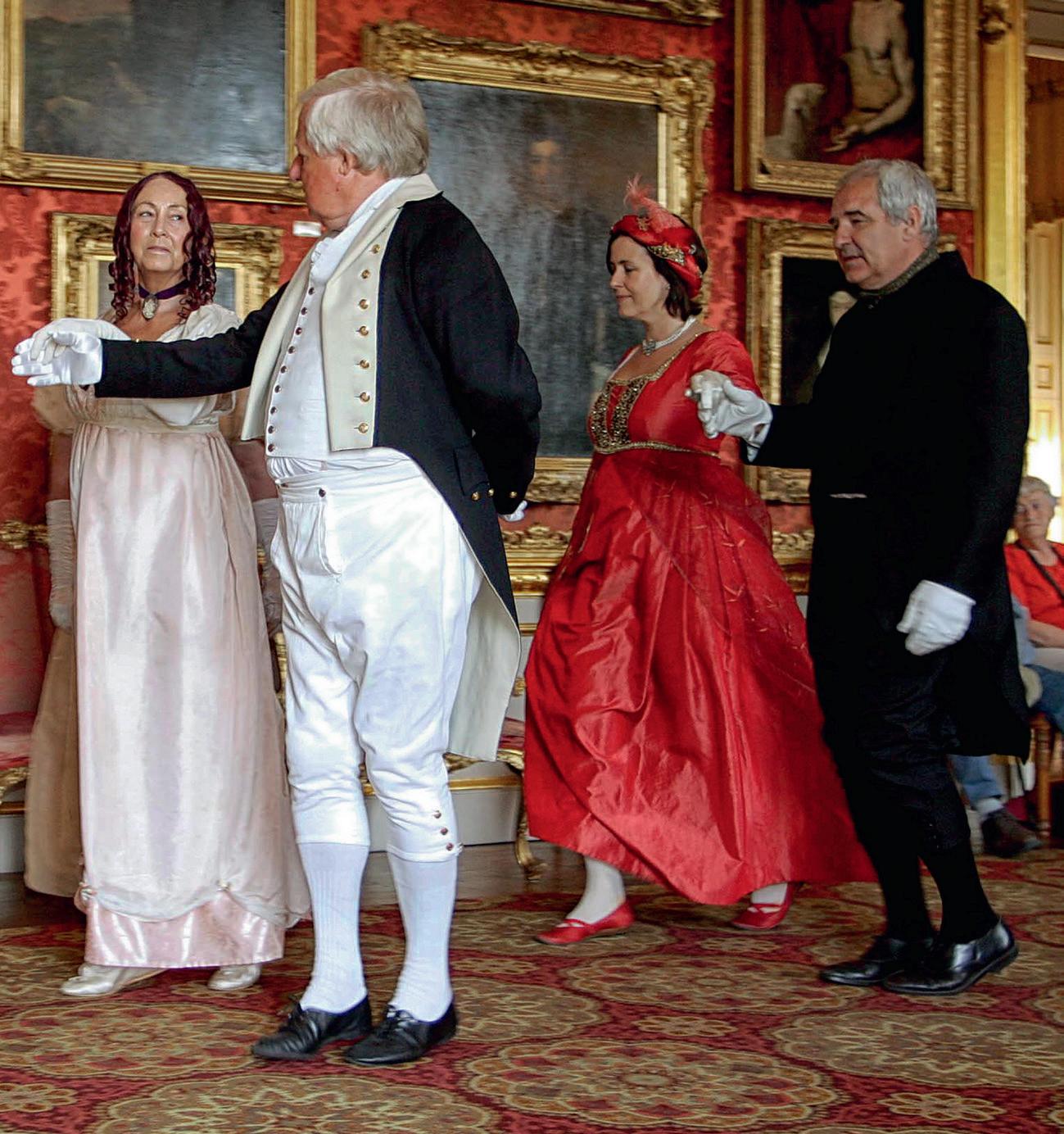
See your What’s On guide with this issue for full listings

MEMBERS’ EXCLUSIVE EVENT
Where Deal Castle, Kent
When Thu 6 Feb
An exclusive out-of-hours opportunity to visit this Tudor artillery castle, built on the orders of Henry VIII as part of a chain of coastal forts. As night falls, visit the captain’s residence and the dark passages beneath the bastions to discover 500 years of history. Afterwards, take in the moonlit sea views from the bastions – just as the captain of the castle watched for invading forces.
MEMBERS’ EXCLUSIVE EVENT
Where Berry Pomeroy Castle, Devon
When Tue 12 Nov
Visit this romantic ruin, set in a wooded Devon valley, with an exclusive after-dark event. There are stories to share about the history of the site and its former inhabitants, from the 15th-century origins of the Pomeroy family castle to the Elizabethan mansion of the Seymours. The castle’s defensive shell was extended during the 17th century, with the intention of creating ‘a very stately house’ to rival contemporary country piles at Longleat or Audley End. Yet it was abandoned –unfinished – around 1700, leading to speculation about the sinister history behind the ruins.

“I like the fixed prices. I like the service. I’m glad I switched.”
Switch now!
• Save up to £395* a year on your energy bills
• £10 Gift Card
• PLUS £30 discount per fuel
goto.energy is revolutionising the way people buy energy. We buy our energy in advance, which means we can guarantee fixed prices at jaw-droppingly good rates.
Special offer for English Heritage members
Switch to goto.energy now and receive a £10 Gift Card from either Waterstones or John Lewis and Partners.
And the savings keep coming! In your second year, you get a £30 per fuel discount off your energy bill!**
Fixed price contract
Sustainably sourced energy
Easy switching from your old supplier
**T&Cs apply. For more information, please visit the Members’ Area on the English Heritage website.


Claim your Members’ Offer now Log into your Members’ Area to see more details.



During the First World War around 3,400 conscientious objectors willingly served in the Non-Combatant Corps (NCC), a military regiment that did not carry weapons. One of these companies was based at Richmond Castle. Like all soldiers in the British army, these men wore military uniform. During the First World War, this comprised the 1905 pattern General Service khaki, badged with NCC shoulder titles and cap badge. No original NCC uniform is known to have survived – presumably because the uniform could be easily reused in other regiments, although the stigma of being a conscientious objector was probably a contributing factor as well. We have brought together original components of First World War uniforms to create what we believe is the only representation of an NCC uniform on display in the country. Joining related ephemera, the uniform is part of a brand new museum at the site, which tells the story of Richmond Castle from the Norman Conquest to the First World War.
SEE THE UNIFORM
To plan a visit to Richmond Castle in North Yorkshire to see the uniform for yourself, go to www.english-heritage.org.uk/richmond-castle

SEE OUR GALLERY OF ARTEFACTS FROM RICHMOND’S MUSEUM www.english-heritage.org. uk/magazine




We discover the surprising science behind a project to preserve early photographs of Charles Darwin and his family at Down House in Kent
WORDS JO CAIRD PHOTOGRAPHS NICK DAWE
There’s no shortage of images of Charles Darwin. The father of evolutionary biology sat for photographers 18 times between 1842 and 1882, producing a large number of portraits. The most well-known show him in the guise of a wise elder statesman, complete with long white beard and a focused, rather stern expression.
A few images exist that show other sides to the great scientist’s character, and we are fortunate enough to have arguably the most important of them in our collection: a portrait of Darwin with his son William. One of a set of six family portraits produced between 1842 and 1854, it is displayed at the former Darwin family home, Down House in Kent, and shows Darwin at the age of 40, many years before the publication of On the Origin of Species. With a kindly gaze looking of camera, he holds the two-year-old William on his knee, probably to keep him still during the minute-long exposure.
The image is a daguerreotype, an early photograph produced on a silvered copper plate. Invented in France by Louis Jacques Mandé
Daguerre in 1839, this process resulted in fragile images that needed to be covered by a piece of protective glass held in place by a frame.
‘Daguerreotypes were not intended, as many photographs were, to be mailed or exchanged,’ says Dr Olivia Fryman, curator of collections and interiors at Down House. Instead they would have been ‘objects of display’, with the Darwin family portraits proudly presented in their leather and velvet cases on a mantelpiece in Down House.
The images are in remarkably good condition, given their considerable age. But the very mechanism designed to protect the portraits now threatens to destroy them: their protective glasses are degrading, leading to a build up of sodium formate salts on their undersides, perilously close to the delicate dusting of silver that forms the image. The most obvious issue with this is that the salts obscure the portraits. Even more concerning is the fact that, should the salts fall on to the photographic plate, they would harm the image irreparably.
Clearly we cannot let that happen – these images of the Darwin children, and the only picture of Darwin with another person, his son William, are
important when it comes to bringing the story of Down House to life and is why our conservation team is hard at work safeguarding the daguerreotypes.
The first challenge, explains conservation scientist Dr David Thickett, was to work out why the glass had been degrading. Since the cases at Down House had been designed to ensure that no element of them released formic acid, the chemical that causes the build up of sodium formate salts, the problem must have been with the daguerreotypes and an album displayed with them. It couldn’t have been the glass that was at fault: that was replaced in 2015 after the conservation team ascertained that the original glass used was ‘not very stable’, chemically speaking. It had to be the frames releasing the formic acid, realised Thickett. Given that the frames are an integral part of the artefacts, the focus turned to ‘looking at diferent ways of sealing the packets up’ to keep any formic acid away from the glass. One solution would have been to replace the glass periodically but Thickett was loath to do so, given the risk of damage each time the packets are opened up. Instead, a longer-lasting solution was required.
Working in their ofce at Ranger’s House in Greenwich, and using test daguerreotypes from the same period as the Darwin family photographs purchased on eBay, the conservation science team came up with a method that involved using self-adhesive aluminium foil on top of specialist conservators’ tape to form an impermeable barrier between the glass and the wooden frame. Further research is being undertaken by Dr Naomi Luxford

to determine if there is a better material than aluminium for this purpose, but the basis of the conservation plan is to fit the foil and tape to each of the Darwin daguerreotypes over the autumn and winter, before returning them to display.
‘Not only are the daguerreotypes very fragile but most of them are smaller than a smartphone’

Thickett’s method didn’t just stop formic acid from getting through to the glass and image. It also prevented a secondary issue that he discovered: condensation, which built up on the glass when the frames released water vapour. Using a piece of kit designed for taking measurements in soil, he used sensor strips to measure levels of moisture within the daguerreotype casings. ‘As far as we know we’re the first people to put this type of sensor in daguerreotypes,’ he says. ‘We’re certainly the first to record the result that we’re getting condensation.’
The vapour was released when the frames heated up so, as well as using the foil, the team used methods such as controlling the environment in the daguerreotypes’ showcases. As with most conservation projects, a multi-faceted approach was required. The sealing method had a third application too: preventing air from getting in and tarnishing the silver particles that makes up the image.
Thickett’s achievement, of creating this technique and identifying the condensation issue, was all the more impressive when you consider the difculties of the project. Not only are the daguerreotypes very old and fragile, most of them are considerably smaller than the average smartphone, making for extremely fiddly work. As with the ingenious repurposing of soil moisture sensors, a lot of lateral thinking had




The six Darwin family daguerreotypes were made between 1842 and 1854 in the London studios of Richard Beard and Antoine Claudet, who were among the frst to practise daguerreotype portraiture in England. Claudet learned to make daguerreotypes from their inventor, Louis Daguerre, in Paris in the 1830s before moving to London to establish a studio there. The portrait of Darwin and his eldest son William is the earliest daguerreotype in the collection, taken in 1842 just before the family’s move from London to Down House. It shows father and
son in front of a painted background made to look like a view over a country house garden. The image is the only known picture of Charles with another member of his family. William, the frst of 10 children born to Charles and his wife Emma, was photographed again in 1849, at Claudet’s central London studio. His sister Annie, then aged eight, sat for Claudet at the same session. She died two years later of scarlet fever. In 1851 the Darwins travelled into London to visit the Great Exhibition in Hyde Park. On the same day, they squeezed in a portrait session at the Regent Street studio of photographer Richard Beard, which resulted in daguerreotypes of George and Henrietta Darwin, then aged six and eight. The latest daguerreotype in the collection, of four-year-old Leonard, was taken at Beard’s studio three years later. Leonard went on to become an accomplished photographer himself, capturing astronomical events around the world.
been necessary to assemble the equipment required. ‘All this technology for measuring in a small space, you can’t buy it of the shelf,’ laughs Thickett.
The final part of the plan is to remove black spots of corrosion that have developed on the decorative brass mats that sit beneath the glass in each daguerreotype casing. It’s a painstaking process that takes place under a microscope using a scalpel.
Once all that’s complete, Thickett and the rest of the team have a decision to make regarding the paper labels attached to some of the original glasses. They either transfer the labels – which may have been put there by Darwin’s wife Emma – on to the new glass in the daguerreotypes or they leave them in storage. It’s just one of numerous decisions that go into looking after precious objects such as these, decisions most visitors won’t likely be aware are being made but critical in enabling them to admire the objects in the future. ‘You see a showcase and it looks great and that’s what it should be, but there’s a lot of work to keeping it that way,’ says Thickett.
So, the next time you’re perusing a treasure from our collections, whether it’s one of the Darwin daguerreotypes at Down House or a rare object at another property, spare a thought for Thickett and his team, hard at work behind the scenes to safeguard the future of these precious artefacts.
PLAN YOUR VISIT
For more details on how to plan a day out at the Home of Charles Darwin – Down House, go to www.english-heritage.org.uk/downhouse




Time, weather and past restoration have taken their toll on precious wall paintings. But it’s not too late…
For centuries, England’s story has been written on church walls and castle ceilings in every corner of the nation. Conserving these precious wall paintings is like drawing back the curtain on the lives of those who shaped who we are. But sadly, dozens of these irreplaceable treasures have deteriorated so much that they could disappear forever.
We need your support
At English Heritage, we look after the largest collection of wall paintings in the country. Our team of experts works tirelessly to save them from years of weather damage and natural decay –but time is running out. With your donation today, we could reach more of these treasures sooner – and stop their stories vanishing for good.
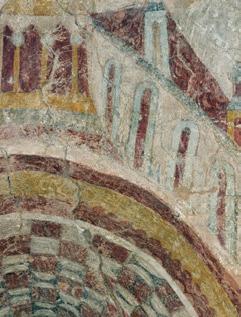
St Mary’s Church, Kempley, Gloucestershire
St Mary’s, Kempley, is home to the most complete set of Romanesque wall paintings in northern Europe. These exquisite 12th-century works are like a living story – a series of beautiful windows into the hearts and minds of our medieval ancestors.

Bolsover Castle, Derbyshire
Dating back to the late Renaissance, the Little Castle at Bolsover is filled with significant wall paintings. Adorning both grand reception rooms and intimate bed chambers, this suite of paintings reflects the passions of William, Marquess of Newcastle.

Longthorpe Tower, Cambridgeshire
One of the most notable sets of domestic 14th-century wall paintings in northern Europe can be found within the tiny tower at Longthorpe. These spectacular paintings chronicle the lives of kings, musicians and saints in a ‘spiritual encyclopaedia’ of the times.

Lullingstone Roman Villa, Kent
Built around AD75, the Roman villa at Lullingstone contains a rare treasure: a painted niche depicting three female water deities. The earliest wall painting in our care, this priceless work ofers a fascinating glimpse into the minds of our Roman forebears.



A donation of £20 will pay for specialist mortar to be mixed and used by our conservation team to renovate plaster damage, which is taking its toll on our fascinating wall painting collections.
A gift for this amount will help consolidate powdering or faking surfaces, which will combat deterioration to the exquisite paintings found at our locations around the country, from Kent to Derbyshire.
This will go towards multispectral imaging, revealing a painting’s condition, otherwise invisible to the naked eye. This investigative tool is crucial for the restoration and future of the paintings at our sites.


A springtime voyage visiting the gardens of England, Scotland, Ireland & Wales aboard the MS Serenissima with Guest Speaker Rosemary Legrand 18th to 28th May 2020
During the month of May our western shores and Ireland become alive with colour. This is a spectacularly beautiful time when many of the gardens, estates and national parks are at their most appealing and the countryside will be lush and inviting. The gardens of Britain and Ireland have a unique quality and from the formal and manicured, to the wilder and more natural, our itinerary includes some of the most beautiful and diverse gardens which in spring are a sight to gladden any heart.
The charming MS Serenissima accommodates a maximum of just 95 guests in attractively de-signed cabins which feature air conditioning, modern shower and toilet, telephone, fat screen televisions and other thoughtful appointments. Cabins are arranged over fve decks and all fea-ture either windows or portholes and the suites feature balconies. Onboard facilities include a lido area with a bar and Jacuzzi, two lounges, a small library and a spacious observation deck. The free seating Venice Restaurant accommodates all guests in one sitting. In addition, there is an outside dining area for when the weather and itinerary permit. The atmosphere on board is warm and welcoming, and the emphasis is on well thought out itineraries, relaxation, time spent with like-minded passengers and discovery.
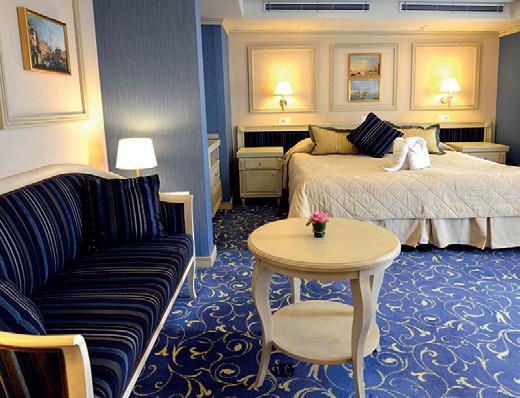



Day 1 Portsmouth, England. Embark this afternoon. A transfer will be provided from Portsmouth Harbour station to the port at a set time. Enjoy a welcome dinner on board this evening as we set sail.
Day 2 Dartmouth. Early this morning we will sail along the River Dart to our anchorage off the town of Dartmouth. From here there will be a choice of excursions, and you may decide to visit ‘Greenway’, the wonderful historic house and garden that was once home to Agatha Christie. Alternatively, visit the 1920s country retreat of the D’Oyly Carte family at Coleton Fishacre. Lose yourself in the RHS accredited garden by the sea as we wander the paths through glades and past tranquil ponds. Meanwhile, the house interior is imbued with 1920s elegance and Art Deco features. Return to the ship for lunch and have some time at leisure in Dartmouth.
Day 3 Isles of Scilly. Spend the morning on traffc-free Tresco, walking its idyllic lanes from the beach to the famous sub-tropical Abbey Gardens. Defying the Atlantic weather, this miracle of a garden is home to more than 20,000 species of plants from over 80 countries.
Enjoy time to wander at your own pace along the paths. After lunch we will tender ashore to Bryher, the smallest of the inhabited Isles of Scilly. Our naturalists will lead a number of guided walks along the tracks that cross the island.
Day 4 Waterford, Ireland. From our berth in the town of Waterford we will drive to Mount Congreve, a spectacular woodland garden on the banks of the River Suir. Enjoy time to walk the numerous paths and visit the vantage points with views over the landscape and meadows beyond. Return to the MS Serenissima for lunch and enjoy an afternoon at leisure to explore Waterford independently.
Day 5 Portmeirion & Bodnant Gardens, Wales. From our berth at Holyhead we will embark on a full day tour visiting Portmeirion, Sir Clough Williams-Ellis’ extraordinary Mediterranean village in the shadows of Snowdonia. We will have free time to explore before driving through the magnifcent landscape of the Snowdonia National Park and enjoying lunch in a local hotel. The afternoon will be spent at Bodnant Garden, situated above the River Conwy, where the gardens have stunning views across Snowdonia.

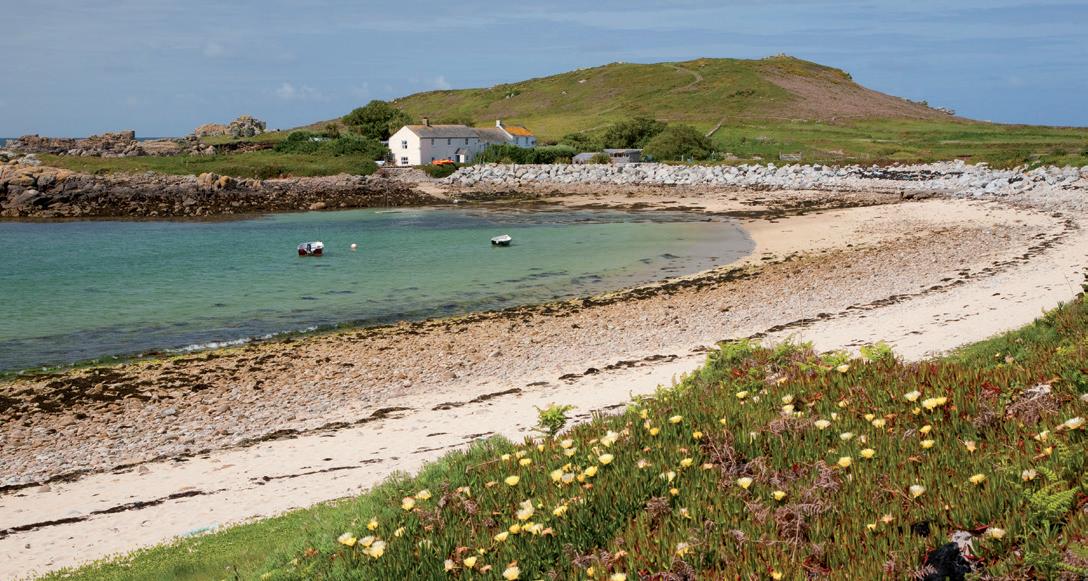

Begun in 1875, Bodnant Garden is the creation of four generations of Aberconways and features huge Italianate terraces and formal lawns on its upper level, with a wooded valley, stream and wild garden below.
Day 6 Peel, Isle of Man. Arrive this morning on the Isle of Man where there will be a choice of excursions. Maybe take the trip to Tynwald Hill, located in the little village of St John’s where on 5th July each year all the laws enacted in the year preceding are promulgated to the gathered government offcials and the public at large, both in Manx and English languages. Continue to Castletown and the magnifcent Castle Rushen, one of the best examples of a Medieval castle in Europe. We end our tour at Castletown station and board the vintage steam train for a delightful and traditional journey to Douglas. Alternatively, join a tour to the 16th century Milntown Estate, once the residence of the Christian family, of which the most famous is the HMS Bounty’s Fletcher Christian. Maybe spend some time inside the house before we explore the 15 acres of gardens and woodlands with rhododendrons, magnolias and camellias providing colour during the spring.
Day 7 Belfast, Northern Ireland. This morning we will make our way to the famous gardens at Mount Stewart which were planted in the 1920s by Edith, Lady Londonderry and are of international importance. The magnifcent series of outdoor ‘rooms’ and vibrant parterres contain many rare plants that thrive in the mild climate of the Ards Peninsula. There will be time to explore the opulent house which reveals a fascinating heritage and historic world-famous artefacts and artwork. Return to the ship for lunch and the afternoon is free to relax on board, explore the city of Belfast at your own pace or maybe take an independent visit the Titanic Experience.
Day 8 Holy Loch & Isle of Bute, Scotland. Our frst call in Scotland is the Cowal Peninsula where we fnd the magnifcent Benmore Botanic Garden situated in a mountainside setting. Take time to walk the paths, see the Victorian Fernery and walk along Redwood Avenue, a line of 50 Sierra redwoods planted in 1862. During lunch we sail the short distance to the Isle of Bute where we will visit one of Britain’s most astounding Victorian Gothic mansions, Mount Stuart House. After viewing the house, we will visit the wonderful grounds made up of over 300 acres of pasture, woodland and gardens combining exotic and native plants. Alternatively, you may prefer to stay in Rothesay and explore the small town and its impressive 13th century castle.
Day 9 Arduaine & Jura, Scotland. Sail this morning along the Argyll Coast to our anchorage at Ardfern. From here we will visit Arduaine Gardens a 20-acre woodland garden beside the sea. The garden enjoys the benefts from the warming effect of the North Atlantic Drift and is a paradise for
plant lovers. Here you will see the magnifcent collection of rhododendron species as well as azaleas, magnolias and many other shrubs and trees creating scents and splashes of colour throughout. Take a walk through the woodland to the coastal viewpoint and enjoy superb views of the Sound of Jura or just spend some time relaxing at the water garden. Return to the ship for lunch as we sail the short distance to Jura. We will go ashore at Craighouse and will be welcomed in the cooperage where we will be given an introduction to the Jura Distillery and an opportunity for a dram. Alternatively enjoy some free time to explore Craighouse, join one of the naturalists on a walk or join an island drive.
Day 10 Gigha & Colonsay. Gigha is a place apart; heather-covered hills,
deserted beaches and a single lane verged with wildfowers that meander for some six miles between cottages and farms. Privately owned by its 120 inhabitants, it is a gem of a place and somewhere not easily forgotten. After landing by Zodiac, we will walk to the gardens of Achamore House where the Horlick family have created a lovely garden with their collection of azaleas, rhododendrons and exotic plants. Lying between Mull and Islay, we will spend the afternoon exploring the island of Colonsay, with her craggy, heather-backed hills and sparse woodland yet impressive array of plant and birdlife.
Day 11 Oban. Disembark this morning. Transfers will be provided to Glasgow Central Station and airport at a fxed time.
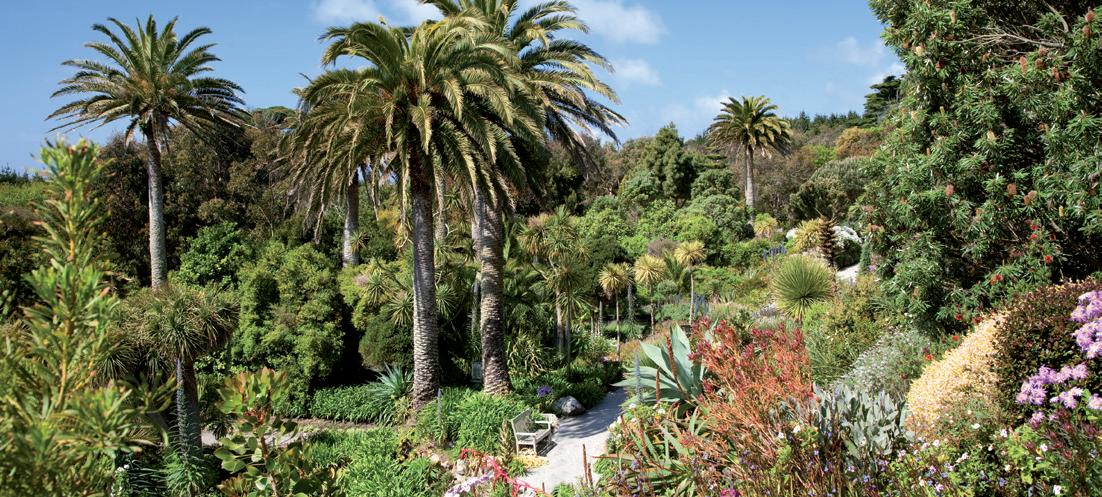
Prices per person based on double occupancy range from £4195 for a Standard Stateroom to £6195 for an Owner’s Suite. Single cabins from £4595
WHAT’S INCLUDED:
10 nights aboard the MS Serenissima on a full board basis • House wine, beer & soft drinks with lunch and dinner on board • Noble Caledonia onboard team • Shore excursions • Gratui-ties • Transfers • Port taxes.
NB: . Our current booking conditions apply to all reservations. Travel insurance is not included in the price. Zodiacs will be used on some days
Written by a 15th-century monk in Yorkshire, the Byland Abbey ghost stories reveal medieval beliefs about death, commemoration and the supernatural
WORDS MICHAEL CARTER ILLUSTRATION CLIVE HICKS-JENKINS
At the beginning of the 15th century, a monk at Byland Abbey, a Cistercian monastery in North Yorkshire, found some blank leaves in a book in the abbey’s library. Monks could rarely resist filling these spaces, jotting down religious verse, recipes for medicines, even humorous drawings. But the Byland monk used the expensive vellum to record 12 ghost stories. Most are set within the lanes, fields and villages that border the monastery’s estates, and all provide fascinating insights into medieval – and especially monastic – beliefs about death, the afterlife and the supernatural. The tales also have a significant place in the history of the English ghost story, and were first transcribed by arguably its greatest purveyor, the Cambridge scholar and medievalist Montague Rhodes (MR) James.
The history of Byland Abbey goes back to 1134, when a monastery was founded at Calder, Cumbria. Within a few years, warfare with Scotland forced the monks to flee. The community travelled across northern England before finally finding a home at Byland, where – somewhat appropriately – they arrived on All Hallows’ Eve, 31 October 1177. Here the monks prospered, building what one contemporary described as

Michael Carter
Michael is a senior properties historian, specialising in the Middle Ages
a ‘large and beautiful’ church. Clad in white habits, the monks lived austere lives structured around a daily routine of communal prayer, reading and manual labour. At the end of the 12th century, Byland was regarded as one the ‘lights’ of religion in northern England.
Pains of purgatory
‘The souls of the wicked and those who died with unrepented mortal sins were destined for hell’
Indeed, so esteemed was Cistercian monasticism that the order was described as ‘the surest road to heaven’. Medieval Christians (and Roman Catholics to this day) believed that after death their souls would go to one of three places. The souls of those who had lived especially holy lives would go straight to heaven, but the souls of the wicked and those who died with unrepented mortal sins were destined for hell. There was also a third state called purgatory. Here souls would be cleansed of less heinous sins before being released to the bliss of heaven. Although temporary, the pains of purgatory were as severe as anything experienced in hell. Medieval people were therefore anxious to expedite the passage of their souls through its purifying fires. People at all levels of society made generous gifts to monasteries, Byland included. In return, they sought prayers for the everlasting salvation of their souls. Many benefactors also left their body for burial at Byland. The multiple altars in the abbey’s church were used by monks for the celebration of commemorate masses for the dead, to help ensure that the souls of abbey’s patrons ultimately enjoyed eternal rest in the company of Christ and his saints. These beliefs about the fate of the soul after death provide essential context for understanding the Byland ghost stories.

The stories can be dated to about 1400. The second tale says that the reign of King Richard II (1377–99) is already past. The crabby handwriting – which even a palaeographer as talented as MR James found di fcult to decipher – is also consistent with this date. The stories are jotted down in a manuscript dating from the late 12th century. It contains the works of various authors, including the Roman statesman and orator Cicero (106–43BC), a 12th-century theologian known as Honorius of Autun, and St Ivo, bishop of Chartres between 1090 and 1115. Monks were required to be Latin literate, and all the ghost stories are in this language – though MR James commented the Latin was, at times, ‘refreshing’ (that’s to say, bad).
By the time the Byland ghost stories were written, there was already a centuries-old tradition of monks recording ghost stories: indeed, most surviving medieval ghost stories have a monastic source. The stories a f rmed monks’ beliefs about the fate of the soul after death, especially the efcacy of monks’ prayers for the absolving of sins and the spiritual salvation of humankind.
This was also the case with the Byland Abbey stories, which stand in a long tradition of Cistercian moralistic writings, varying in length from just a few lines of text to over a hundred. The supernatural element usually centres on a ghostly, often shape-shifting apparition, which appears in human form. The ghost tells of the sin requiring forgiveness. The individual to whom the ghost appears ensures prayers are said for the tormented soul, which is then released and finds peace.
Almost all the stories are set in northern England, many within a few miles of the abbey: Ampleforth, and the villages of Gilling East and Kilburn are all mentioned. The ghosts come from across the social spectrum. The first story features a servant at nearby Rievaulx Abbey, while the final story features members of the local gentry community. In the sixth, the ghost is a canon of the Augustinian priory at Newburgh, who requires absolution from his prior for purloining a silver spoon.
Even today, some of the stories are genuinely chilling – in story five a woman captures a ghost, plunging her hand ‘deeply into the flesh of the spirit, as if the flesh were rotten’. It’s clear that those observing the apparitions experienced real fear. But the beliefs of medieval Catholicism provided comfort. In several of the stories, the Holy Name of Jesus and the Wounds of Christ are evoked, both popular devotions at this time. However, for the most part, the spirits of the dead cause neither physical nor spiritual harm. The exception is the ghost in story four, the only tale set within the confines of the abbey. This tells how the body of one James Tankerley, rector of the nearby parish at Cold Kirby, rose from its grave at Byland, returned to Cold Kirby and gouged out the

The English Heritage sites to visit for more chilling ghost stories
Battle Abbey, East Sussex
Visitors and staf at the abbey have supposedly seen spectral monks and, on one occasion, a school group reported seeing a re-enactor dressed in monks’ robes – even though no re-enactor was on site at the time.
Castle Rising, Norfolk
This keep was once the place of exile of Queen Isabella, who allegedly murdered her husband, Edward II. More recently, people visiting the site have experienced being poked and pushed about. Could the castle now be home to a petulant poltergeist?

In These Our Monsters (published on 24 October 2019), eight well-known writers (including Sarah Hall and Graeme Macrae Burnet) tell stories inspired by the myths and legends attached to some of our historic sites, such as Stonehenge and Whitby Abbey. Illustrated by Clive Hicks-Jenkins. RRP £14.99. Available for preorder (and to buy after 24 October) at www.englishheritageshop.org.uk
Dover Castle, Kent
Staf here receive reports of visitors seeing something untoward in the castle’s tunnels about once a month, while two members of staf once saw the lower half of a man’s body in the doorway to the king’s chamber.
Bolsover Castle, Derbyshire
Security guards have been alarmed by unexplained lights in the empty property, while a member of staf who once locked up the castle reported hearing a scream that got louder and louder as she walked away, only for her to rush back and fnd no one there.
eye of the rector’s former concubine. The troubled abbot and monks exhumed the body and threw it into Gormire Lake, believed to be bottomless. The laity were turning to the monks of Byland for the salvation of their souls well into the 16th century. But the abbey could not escape Henry VIII’s attack on the monasteries, its inevitable end coming in 1538. The monks seem to have made a determined efort to save their library intact. Charles II purchased the manuscript containing the ghost stories in 1678, and George II presented it to the British Museum in 1757. The ghost stories lay forgotten for centuries. It’s fitting that in 1922 it was MR James who brought them to public attention, especially as his own ghost stories include tales of medieval manuscripts, monasteries and shape-shifting apparitions.
PLAN YOUR VISIT
For more details on Byland Abbey, go to www.english-heritage.org.uk/byland-abbey. To read the ghost stories, go to www.anselmclassics.com/byland/about.html




If the thought of another British winter is already getting you down,then why not plan an escape to Spain or Portugal where you’ll enjoy the warmer climes as well as excellent food and wines.
Our great value holidays in the Spanish Costas and the Algarve start from just £537 per person for a month away and include a return overnight cruise to northern Spain with your car.
All accommodation is hand-picked and ideal for those who love beach resorts, a round of golf, coastal walks or just want a home from home, away. There’s something to suit every taste, plus at some you can even take your pet!
Our helpful team are on hand to help you put together your perfect long-stay holiday, with stays of less than or more than a month also available.
✓ Return sailings from Portsmouth to Santander or Bilbao with your car
✓ Comfortable en suite cabin onboard
✓ 4 weeks stay at a choice of accommodation
✓ All utilities plus regular cleaning service and linen change

Finding a 300-year-old scribbled note helped two of our historians unlock a horticultural conundrum – and now it’s contributing to a project to restore an 18th-century landscape in south-west London
PAUL BLOOMFIELD PHOTOGRAPHS OLIVER EDWARDS
On a blazing summer day, I’m sitting in the parlour at Marble Hill House, an early 18th-century Palladian mansion, its walls draped with chinoiserie papers. Reproductions of old plans, letters and a handwritten note are spread across the table before me, while landscape advisor Emily Parker and senior properties historian Dr Megan Leyland explain their significance.
‘Back in 1991, a hand-drawn garden plan was placed among documents connected with Marble Hill in the archives of the Norfolk Record Ofce,’ says Parker, indicating a detailed drawing before us.
‘Then, recently, I was sifting through the letters and manuscripts of 18th-century poet Alexander Pope in the British Library,’ says Leyland, taking up the story. ‘On the back of some are mini sketches

of gardens, and I found the words “plum bush” scrawled on one, alongside a tiny bit of design that resembles a bit of the garden at Marble Hill.’
‘We recognised it as the historical name of one of the fields on this site, bought for Henrietta Howard in 1724,’ says Parker. ‘When we analysed the handwriting on the letter and on the garden plan, they were very similar – and these pieces of evidence made us confident that this sketch was made by Pope to show his ideas for Marble Hill. Which is very exciting, because it would be the only known surviving garden plan by him.’
This kind of detective work is an important part of Parker and Leyland’s roles in planning the conservation and renovation of our properties, particularly gardens. And here, backed up with archaeological research and other studies, it’s informing a major restoration of this important

landscape created nearly three centuries ago. But this isn’t the story of a poet and his garden – it’s a tale of a fashionable woman whose ideas created this wonderful estate.
Parker and Leyland lead me upstairs to the dressing room. ‘This portrait of Henrietta Howard, by painter Charles Jervas, was commissioned by Pope in 1724, when she was about 35,’ says Parker, showing me a picture of a thoughtful young woman.
‘At a very young age she married Charles Howard, later earl of Sufolk, who treated her abominably.’
‘She then obtained a position as woman of the bedchamber to Caroline, wife of the Prince of

Wales, George (later George II),’ continues Leyland, ‘and became his mistress. At court, she came to know such intellectuals as Pope and Jonathan Swift and, in 1723, George made her a substantial gift including stocks, jewels and furniture. The following year this land was bought for her, and she began building Marble Hill House.’ Howard then met with her friend Pope and garden designer Charles Bridgeman to discuss plans for the gardens of her new home.
Gazing out at the grounds from the window of the adjacent Great Room, Parker points out how elements of the modern landscape relate to Pope’s plan, and to a much more detailed survey of about 1749, which shows every tiny element. ‘Howard was among the first to adopt a “classical” style introduced in the 1720s. Recalling ancient Greece and Rome, it combined winding woodland paths with straight avenues, moving away from formal designs with parterres and so on. It wasn’t popular for very long and few such gardens survived. That’s one reason Marble Hill is so important.’ Antiquity is also recalled in the furnishings of the Great Room, adorned with five paintings of fantasy classical scenes by Giovanni Paolo Panini, purchased by Howard in 1738. ‘They echo the style of the classical gardens,’ says Parker. ‘Howard and

IN NUMBERS
£6m
Total cost of the restoration project
66
Acres of grounds at Marble Hill House
£11,500
Value of stock given to Henrietta Howard by Prince George in 1723 13%
Garden area to be restored as proportion of overall park
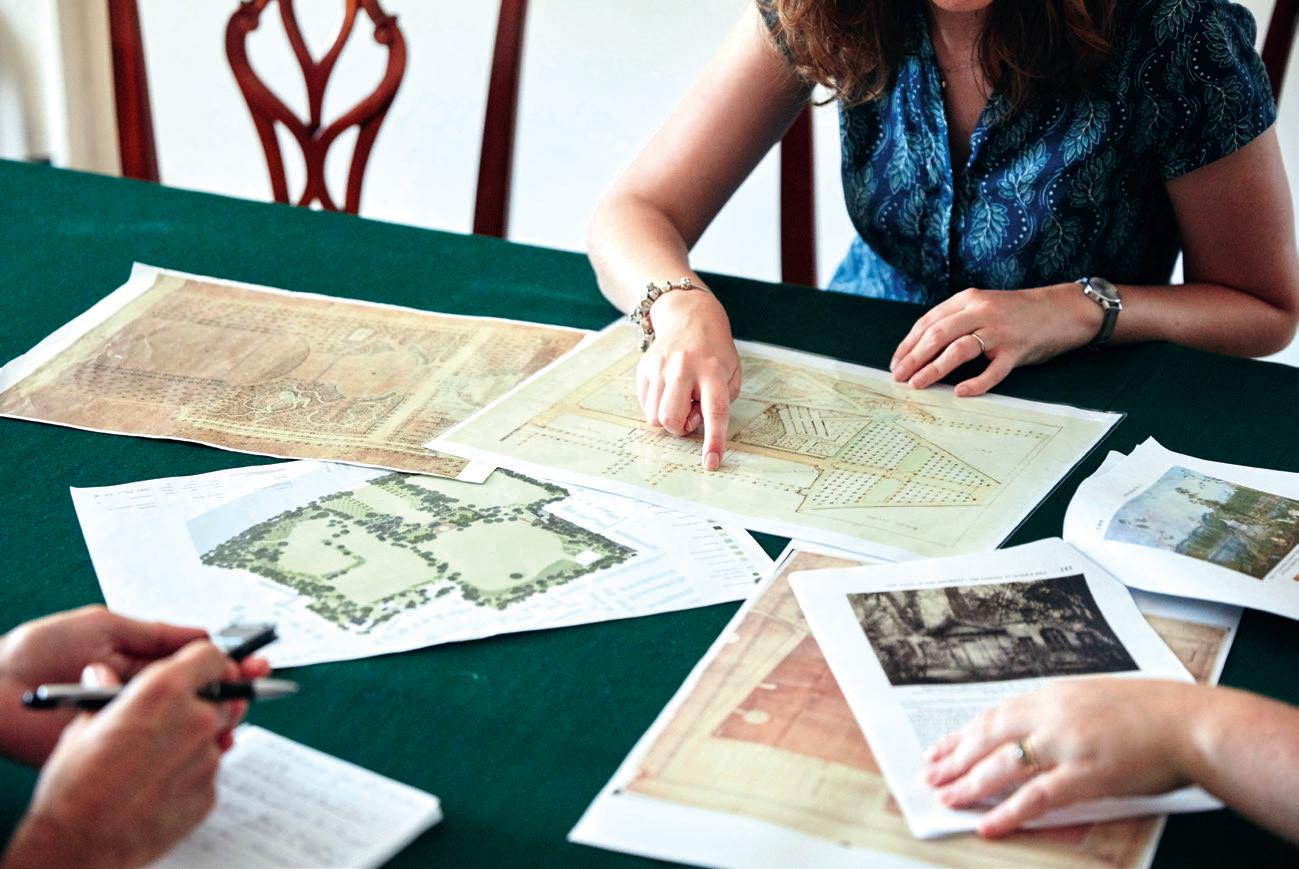
‘After five years of planning, the property will undergo a dramatic £6m restoration’
the men borrowed ideas from ancient landscapes: Pope was translating Homer, and drawing on gardens described in the letters of Pliny the Younger. They were kind of recreating Rome in Richmond.’
Gesturing at the grassy area below, Parker compares it to the plan in her hand. ‘We’re looking down on the oval lawn, where Howard probably enjoyed eating al fresco, and the terraces rolling down to the river beyond. But there’s much more on these plans – and we want to bring that back to life.’
After five years of planning, from September the property will undergo a dramatic £6 million restoration, made possible with the support of the National Lottery. Marble Hill House will close for 18 months, during which its stucco, paintwork and internal decor will be refreshed, and new interpretation installed. Currently accessible only on weekend guided tours, when it reopens in April 2021 the house will be open five days a week.
What’s happening outside, though, is even more exciting. Through years of sleuthing, augmented with archaeological research, geophysical surveys and aerial photography, Parker and Leyland have identified the likely layout of Howard’s garden in the 18th century, along with the existing elements today, and formulated a restoration plan.
We descend to explore the park, pausing at the 18th-century ice house immortalised in a Jonathan
Swift verse featuring the line ‘… and steal my artichokes no more’. Humorous, yes, but his poem also reveals that Howard’s estate encompassed productive gardens and fields, nurturing livestock and growing artichokes and other crops, as well as being a decorative place to entertain. Parker points out the vestiges of the ha-ha – the dyke that excluded grazing animals from the gardens – and the sports pitches, café and children’s play area that are also being revamped. We continue wandering round to the ‘other’ front of the house, facing the river.
‘On the plan, you can see an arbour of trees framing the oval lawn, and hedges around the wooded areas. We’ll be replanting those, which will be good for wildlife,’ says Parker. ‘We’ll restore a flower garden to the east, while at the other side visitors will be able to play on a replica of Henrietta’s ninepin bowling alley – a survey found the original clay court a few inches below the turf. And to the north, we’ll replant the orchard shown on the survey from circa 1749 with old varieties of plums and cherries, much as it would have been in Howard’s day.’
The project isn’t about making radical changes but rather reframing the gardens and returning a sense of the original structure. ‘It’s really natural now, so just adding a little essence of the formal will make it feel more like a garden than a park,
and will help connect the house with its landscape,’ says Parker. ‘They were designed and built together, and we’d love for them to be enjoyed that way again.’
‘We need to strike a balance between historic significance, what’s important to people today, and the ecology of the gardens,’ adds Leyland. ‘This has been a public park for over 100 years, and our community outreach programme revealed just how much local people care about it. That’s a part of Marble Hill’s history, as much as Howard’s life.’
As my visit ends, we delve into a copse to visit the grotto, which was decorated with gorgeous shells and pieces of coral by Howard and her great-niece. And today, in the cool shade, I hear faint echoes – the voices of her circle, who likely joined her here to lounge, chat and discuss literature and poetry.
‘During our research, I unearthed a 1764 poem about Marble Hill by Anna Chamber, niece of Howard’s second husband, George Berkeley,’ recalls Leyland, who recites a few lines: ‘The grotto is the
Marble Hill House was the vision of a woman who, unusually in 18th-century high society, was given a second chance at life, and grasped it with energy and imagination. So, it’s fitting that, through the work of Parker, Leyland and their colleagues, Howard’s home and beloved gardens are also being given a second chance – ofering a glimpse into the world of one of the most remarkable women of her era.
For more details, go to www.english-heritage.org. uk/marblehillhouse. To support our Marble Hill appeal, go to www.english-heritage.org.uk/supportus/our-appeals/marble-hill-appeal place, they cry, the fittest for our melody… The scatter’d blossoms friendly meet, to make a carpet for the feet.’ These gardens were designed to enchant the senses – and soon will again.

Brodsworth Hall and Gardens, South Yorkshire
Since spring 2017, we’ve been working to restore special garden buildings, including the outdoor privy and the 19th-century game larder, which was used to hang game.
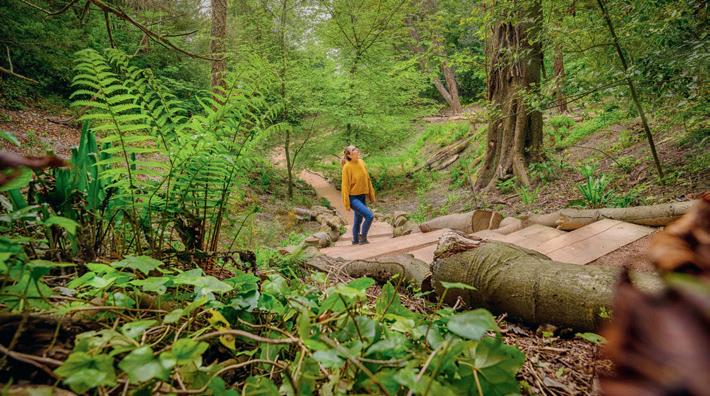
Walmer Castle and Gardens, Kent
When William Pitt the Younger lived at this Kent castle, he and his niece, Lady Hester Stanhope, planted a disused quarry. Called The Glen, it reopened in the spring after a £2.3 million restoration project.

Kenilworth Castle, Warwickshire
This summer we undertook a six-month renovation project to refresh the castle’s formal Elizabethan garden, based on one built by Robert Dudley for the visit of the Virgin Queen in 1575.

Witley Court and Gardens, Worcestershire
After undertaking archaeological research, we restored the parterre along with the fabulous fountain in the extensive grounds surrounding this vast ruined stately home in Worcestershire.

Mount Grace Priory, North Yorkshire
Renovations, replanting and conservation in the gardens were part of a major project in 2017–18 at Mount Grace Priory, one of the best surviving examples of a Carthusian priory in England.

Wrest Park, Bedfordshire
The latest stage as part of a 20-year overhaul across this 92-acre Bedfordshire estate – the gardens of which date from the 18th century – saw the restoration of the bath house area in 2019.




















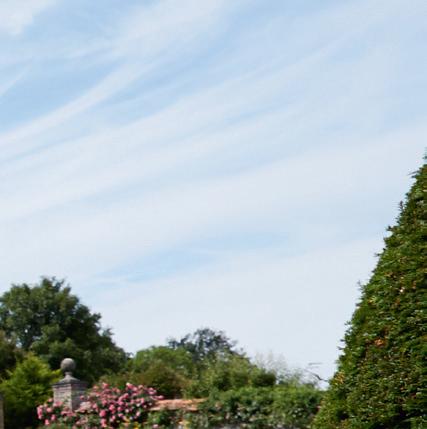

Use Members’ Rewards to help you shop for gifts that are sure to put a smile on the recipient’s face!
1 Browse Visit the Members’ Area of our website at www.english-heritage. org.uk/rewards to discover our latest offers and competitions.
2 Select Click on the offer you’re interested in to go to the dedicated page for that offer.
3 Redeem Follow the instructions on the offer page.






Step back in time with The Railway Touring Company for an exciting steam rail journey. The wide range of destinations includes Edinburgh, York, Lincoln, Chester and Bath.


Wine always makes a great gift, and with this offer from Laithwaite’s you’ll pay just £29.94 for six bottles of fruity red wine, saving £23, and also get free P&P that’s usually £7.99. SAVE £10 PER




RECEIVE £10 FREE BEER CREDIT AT HONESTBREW
Become an HonestBrew member today and you can enjoy the best prices on craft beer – and you’ll receive £10 free credit. Choose from hundreds of the world’s best beers.


You’re sure to fnd a delicious range of stocking fllers for everyone on your list at Beech’s Fine Chocolates, a heritage company that has been making confectionery since 1920.

Join the 10 million-plus guys who have already tried Harry’s. Harry’s manufactures high-quality shaving products and sells them direct to customers through a fexible subscription plan. Subscribe to a plan and receive a free trial set that usually costs £15.50. The set includes a razor handle, fve-blade razor, shaving gel and travel cover, plus for a limited time only you’ll also receive a free travel-sized post-shave balm. You just need to cover the £3.95 postage.


Give the gift of timeless style with 10% off online orders at Denby, a British pottery that still manufactures its beautiful cookware, serveware and tableware in the heart of Derbyshire. 10% OFF BEECH’S FINE

Book a holiday to British Columbia with Frontier Canada and enjoy a free excursion. Visit Vancouver and see the Pacifc Ocean before experiencing the lakes, mountains and wildlife beyond.

More than a new destination every day, or the most luxurious ships. More than the most exquisite meals and impeccable service. More than FREE Flights & Transfers or FREE Unlimited Shore Excursions in every port.
Here at Regent Seven Seas Cruises® we never compromise. We truly understand that a genuinely all-inclusive travel experience is much more. It’s about fascinating encounters you will never forget, and having Every Luxury Included, just the way you like it.
Discover the world with us.
EVERY LUXURY INCLUDED



‘It was very mysterious but exciting’
Charlotte Thompson on our brand new escape room experience
Going underground to experience Dover Castle’s new escape room, The Bunker, was brilliant. There were six of us in our team and none of us had done an escape room before, but we were hopeful that we could crack the codes in time. On arrival we were greeted by Mike, who was in character as a civil defence offcer. He showed us into a room that was made up as an abandoned bunker, where he briefed us on
our mission, ran through some rules and gave a backstory – it was very mysterious but exciting. The escape room is based on the Cold War and housed in the tunnels of the castle, and our task was to solve clues in order to unlock the bunker and get everyone to safety before a nuclear air attack. The site really brought the concept to life, as you got a taste for what it would have been like hiding in the tunnels, which would have been
used as a refuge for leaders in the event of a nuclear attack. Our team escaped in a time of 53 minutes and six seconds, which we were really pleased with. I would 100 per cent recommend the experience. It makes a great day out that bit more fantastic. And it’s inspired all of the group to want to try another escape room – in fact, the next one is already booked! www.english-heritage.org.uk/ dovercastle
Share your stories and send us your experiences, photos and tips
Wellington Arch police station
In the Ask the Experts section in the July 2019 issue, Jeremy Ashbee replied to a question regarding Wellington Arch, stating that it was used by the Metropolitan Police until it closed in 1959. Unfortunately, this is not correct. I joined the Metropolitan Police in 1963 and was posted to ‘A’ division, which covers the Hyde Park area. In 1966 I was posted to Wellington Arch police station for one year, before joining the CID. I left the Metropolitan Police in 1970 and Wellington Arch was still in use as a police station then.
Andrew Schur
Jeremy Ashbee, head properties curator, replies: I’m delighted to hear this new and frst-hand information about the more recent history of our sites – we shall take great pleasure in correcting the story that we tell. I wonder whether anyone else reading this could shed any light on when the police station really did close?
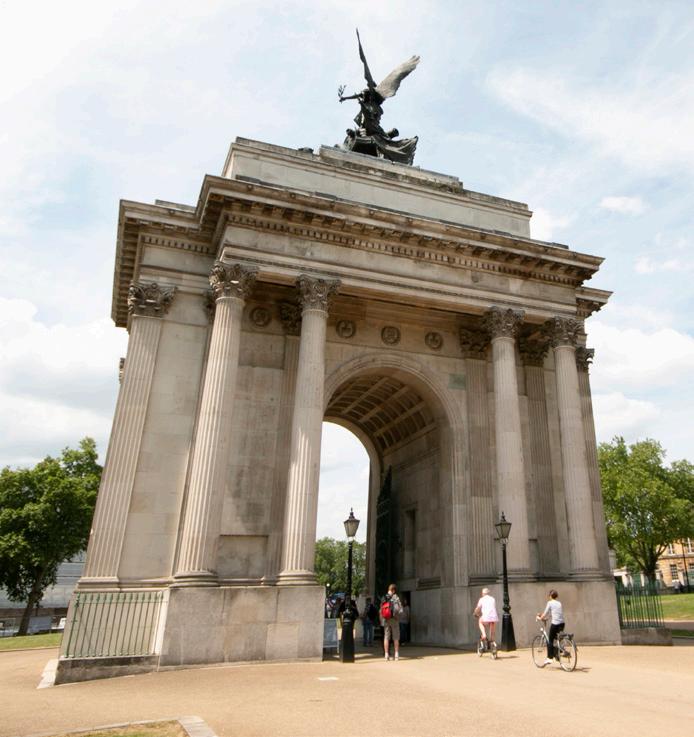
What’s got you talking on our social media channels?
Today I was looking at a photograph of the new bridge at Tintagel. It is of great interest to me as my sister-in-law and I visited Tintagel in 1953 when, after a while spent on the beach, we made the steep climb up to the ruins. We were staying at the youth hostel on the clifs while making a cycle tour of Cornwall. I wonder if we would have found it quite as exciting to cross over now on this amazing new bridge!
Sylvia Hulme

I was delighted to see your write-up on Sir Walter Scott’s Ivanhoe and the book’s connection to Conisbrough. Your article says that Scott saw the castle in passing but I have come across a newspaper article from 1880 in which Conisbrough’s oldest resident, Mr Thomas Sissons, at the age of 93 reminisced that as a young man he had had ‘the honour of escorting Sir Walter Scott to see the ruins of the old castle and grounds. Sir Walter was much pleased at his many answers to all questions.’ We know that the author had stayed at the nearby Boat Inn in Sprotbrough and it would be nice to think that he maybe took the route of many ramblers today along the River Don and into Conisbrough.
Penny Lloyd-Rees
View from the top
This 360° view from the new footbridge at Tintagel Castle in Cornwall has had over 2,600 likes and more than 500 comments. bit.ly/2z9pmDB
All made up Fashion historian Amber Butchart and make-up artist Rebecca Butterworth’s video on Georgian make-up has had over 340,000 views. bit.ly/2ZjcjKF
www.english-heritage.org.uk/magazine facebook.com/englishheritage twitter.com/englishheritage instagram.com/englishheritage

I just love Bolsover Castle, on my last visit my friend and I were the frst to arrive at opening. We separated whilst looking around, it was amazing, I had the castle to myself. I loved it, the staff are so lovely, so knowledgeable and generous with their time.
Belinda Murada (via Facebook)
I like to test the station staff at King’s Cross and ask where the Nigel Gresley Blue Plaque is. Congratulations to today’s info team!
Poplett @HelenPoplett (via Twitter)
Great day out to #Tintagel today to see the new bridge - @EnglishHeritage have done a fantastic job! Views were breathtaking - rather windy at the top though!
Clare Kelly @LawyerClare (via Twitter)
You can tell that Edward I used Harlech Castle as inspiration when planning Beaumaris Castle. I can’t quite decide which I prefer! They’re both fab castles. Thanks to a partnership between @EnglishHeritage and @cadwwales I was able to see both without paying a penny!
Jenny @A1753162

What a state
This photo of one of the glorious state rooms at Osborne – Victoria and Albert’s home on the Isle of Wight – has generated almost 3,000 likes. bit.ly/31Rp54E
WHAT’S NEW?
Log in at www.english-heritage. org.uk/magazine

View our interactive Audley End map
Discover the things not to miss during a visit to Audley End House and Gardens in Essex.

Take a tour of musicians’ blue plaques
We guide you through a walking tour of London that takes in musicians’ and composers’ blue plaques.

See Non-Combatant Corps uniform
Find out more about the Non-Combatant Corps uniform that’s on display at Richmond Castle.

Take our Battle of Hastings quiz
Test your knowledge of Battle Abbey and the Battle of Hastings with our fendish 20-question quiz.
The English Heritage team answers your questions



Kathy Parsons asks…
Q
Can you tell me more about the portrait of Pope Innocent X by Diego Velázquez at Apsley House in London?
Josephine Oxley replies…
A Velázquez’s original painting, completed in 1650, is in Rome at the Galleria Doria Pamphilj. Is the Apsley House version a copy that Velázquez took back to Spain? Is it the painting recorded in the Spanish inventories as part of the Royal Collection in 1772? The copy at Apsley House is one of two considered the most likely to be by Velázquez. Since major research was undertaken in 2006, we now present this painting as by the artist. Hopefully further research will reveal more about this wonderful painting as time goes on.
John Kitson asks…
Q
The March edition says that the siege of Kenilworth Castle was the longest in England’s medieval history, but the May issue states that it was Simon de Montfort’s siege of Pevensey Castle. Which is right?
SEND US A QUESTION

Roy Porter replies…
A Specifc dates aren’t easy for the start of the Pevensey siege. The earliest I have is 18 September 1264, when several knights are ordered to go to Pevensey to assist Simon de Montfort in besieging the castle. Simon is reported as raising the siege on 16 July 1265. So, in total, two days short of 10 months’ duration is provided by the available dates. We know some details of the siege but lack the colour that might have been provided by a contemporary description of the siege.
Ralph Crouch asks…
Q
Putting aside Roman ruins and a few remaining straight roads, what is left now in our 21st-century society from the Roman occupation? Does our DNA have traces from Roman soldiers? Is our language the richer for Roman Latin?
Andrew Roberts replies…
A This a great question. It’s very diffcult to identify the specifc origins of current DNA but it is amazing to think that peoples from as far apart as North Africa and Romania once lived on Hadrian’s Wall. If you want direct consequences of the occupation, then Londinium, Aqua Sulis (Bath) and Lindum Colonia (Lincoln) are Roman towns that still exist as modern towns or cities. However, the prevalence of Roman architecture and literature was mainly due to later British societies copying Rome rather than stemming directly from the occupation. The Victorians were fascinated by Roman history and aspired to match the Roman empire, while the Wall in Game of Thrones is based upon Hadrian’s Wall. The most powerful legacy of Rome in my opinion is its potential to inspire every generation.
For your chance to have your questions answered by one of our English Heritage experts, email us at membersmagazine@immediate.co.uk


Five of our unmissable Member-exclusive events over the months ahead
2 December
Audley End House and Gardens, Essex
Get into the festive spirit at our Christmas wreath-making workshop at Audley End House and Gardens – a decadent Jacobean mansion house with tranquil gardens created by ‘Capability’ Brown. Join head gardener Louise Ellis to create a wreath from a range of materials sourced from the estate. Lunch and all materials are included.
11 November
Hanging Grimston, North Yorkshire
Join Marcus Jecock, senior investigator at Historic England, on a tour of Hanging Grimston – a medieval village that appears to have been occupied for several hundred years. The earthworks of Hanging Grimston are particularly well preserved and this unique site has recently undergone excavation.
12 November
Wellington Arch, London
The Wellington Arch team lead a commemorative walking tour of some of London’s finest war memorials. Find out about what they represent, the imagery used and also how a war memorial comes to be erected. Starting from Wellington Arch, the walk will last for two hours, finishing at the Cenotaph.

11 March
4
Roman MosaicMaking Workshop
Lullingstone Roman Villa, Kent
All levels are catered for at this fascinating Roman mosaic-making workshop. Join mosaic artist Oliver Budd and get the chance to work with a variety of mosaics, from beautiful Venetian glass smalti to colourful and varied vitreous glass and water glass. All materials and equipment will be provided.
12 March
Carlisle Castle, Cumbria
For 500 years Carlisle Castle was the principal fortress of England’s north-western border with Scotland. This walking tour will delve into the fascinating history of the 10 sieges at the castle. Hear how sieges developed over the years, from undermining the walls in 1216 to the use of gunpowder in 1745.
For more Members’ events, go to www.english-heritage.org.uk/members-events
BEST OF THE REST Christmas events
Seasonal activities for everyone over the festive season

Christmas Fayre
This traditional festive gift fair is a fantastic alternative to the high street. Belsay Hall, Castle and Gardens, Northumberland, 9–10 Nov



For full listings of this season’s exclusive Members’ events, see your latest What’s On guide with this issue
Victorian Christmas Children can meet Father Christmas, play traditional games and make their own Victorian toy to take home. Osborne, Isle of Wight, 30 Nov–1 Dec
Carols at Apsley House
Celebrate Christmas with carols sung by the Chapel Choir of Royal Holloway. Apsley House, London, 6 Dec
Christmas at the Castle
Roman Mosaic-Making Workshop, Lullingstone Roman Villa

Enjoy seasonal storytelling, see the castle jester and visit Father Christmas. Kenilworth Castle, Warwickshire, 7–8 Dec
Carol Concert
Chesterfeld Philharmonic Choir will be performing carols in the Riding School. Bolsover Castle, Derbyshire, 19 Dec
www.english-heritage.org. uk/events
Rohan Troggings are tough, highly breathable and water resistant walking trousers with all the comfort and easy style of ‘pull-on’ jogging bottoms.
They’re made from an advanced blend of polyamide and stretchy elastane which gives great freedom of movement, the brushed finish inside helps to keep you snug and warm and scuff tape on the inner rear hem improves durability. Perfect for hillwalking, Sunday strolling, daily dog walking and gentle cycling. Welcome to your
How to buy:
Online: Visit rohan.co.uk and enter EHT9 at the Basket Page
Shops: Simply take this advert
Phone: Call 0800 840 1412 and quote EHT9













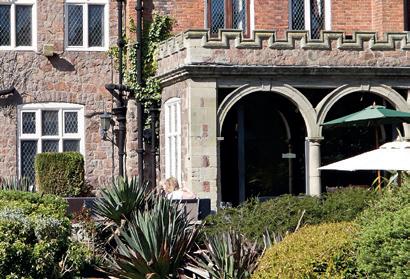

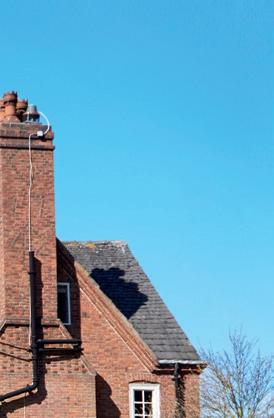







Test your knowledge of the Battle of Hastings with our quiz
1 Which king of England died on 5 January 1066, leaving no direct heirs?
2 Whom did Harold defeat in a battle at Stamford Bridge, just before the Battle of Hastings?
3 Where did the Normans land in England?
4 Roughly how large were each of the two armies at the Battle of Hastings?
1,000–2,000 men
5,000–7,000 men
10,000–12,000 men
5 What was notable about William’s minstrel, Ivo Taillefer?
6 What were the ‘housecarls’?
7 Why did some of William’s forces on the left flank flee in panic?
8 For how long did the Battle of Hastings last?
9 William’s forces killed large numbers of Englishmen by twice using what tactic?
10 What animal played a decisive role in the Battle of Hastings?
11 The Bayeux Tapestry appears to show Harold being struck in the

eye by an arrow. But how does an earlier source say Harold died?
12 Which abbey housed the supposed grave of King Harold?
13 For whom was the Bayeux Tapestry supposedly made?
14 When was William crowned the new king of England?
15 Why did William build the Benedictine abbey at Battle?

16 Several of William’s henchmen also founded monasteries, including this one (pictured below). Can you identify it?

Log into the Members’ Area at www.english-heritage. org.uk/members to check your answers
17 William (pictured bottom) was king of England until his death in 1087. Who succeeded him?
18 Part of William’s legacy in England was Norman architecture. Can you identify these three Norman buildings?



19 Why did the number of monks at Battle Abbey drop from 52 to 34 in 1348–49?
20 Who did Henry VIII give Battle Abbey to in 1538?
To book your tickets for this year’s 1066 Battle of Hastings re-enactment, which takes place on 12–13 October, go to www.englishheritage.org.uk/ visit/whatson/1066battle-ofhastings

The Jamaican reggae star came to regard the capital as a second home, and is being honoured with a blue plaque at his former Chelsea base
When Bob Marley came to London early in 1977, it was as a political refugee. A few weeks before, caught in the crossfire during a particularly violent period in Jamaican politics, he had come under attack from gunmen at his home – 56 Hope Road, Kingston. Fortunately the reggae star’s injuries were not serious, and he was spirited away first to Nassau and then to London.
Marley’s record company, Island Records, found him a temporary berth on King’s Road in Chelsea. A more permanent
base was soon found for him – and his band, The Wailers – at nearby 42 Oakley Street, a four-storey terraced house then used as serviced apartments.
Oakley Street runs south from King’s Road and is close to Battersea Park, where Bob and his band enjoyed playing football. Don Taylor, then Marley’s manager, remembered how, before settling down to rehearse and record songs, he would rise late and play football for what was left of the morning – weather permitting. Marley was no fan of the chilly English spring but, unsurprisingly, he
did appreciate the fact the police did not routinely carry guns. Having spent several earlier spells in London – the first in 1971 – he was moved to tell the journalist Vivien Goldman that he regarded it as ‘a second home’. He and his bandmates hung out with The Clash, and The Wailers’ 1977 release, Punky Reggae Party, was a product of this musical cross-pollination.
During the five months or so that The Wailers were based in Oakley Street,

‘During their five months in Oakley Street, the Wailers recorded songs for the Exodus album’
they recorded songs for what became the Exodus album, including ‘Waiting in Vain’, ‘Three Little Birds’, ‘One Love’ and ‘Jamming’. They also recorded several tracks for their next album, Kaya Recording sessions took place at Basing Street Studios in Ladbroke Grove, more recently known as Sarm West.
It was in Ladbroke Grove, on 10 March 1977, that Bob Marley and his bassist, Aston Barrett, were caught in possession of cannabis and later fined. But this kind of behaviour has never been a bar to the award of a blue plaque – after all, the very first one was given to Lord Byron.
DISCOVER MORE
Go to www.english-heritage.org.uk/ members to download a map of our walking tour of musicians’ and composers’ blue plaques in London
Designed just for you and fitted in time for Christmas*



With substantial savings across our entire collection, there’s never been a better time to invest in quality designs and unrivalled craftsmanship. Our luxurious designs are made uniquely to you, in your choice of contemporary, traditional or classic styles. Discover the difference our expert designers can make to your home. Request a brochure or arrange a design consultation today and we’ll fit your luxury furniture in time for Christmas*





Turn to page 34 to play your part in protecting these irreplaceable treasures.


Across the country, some of our most precious wall paintings are at risk.



Turn to page 34 to play your part in protecting irreplaceable wall paintings